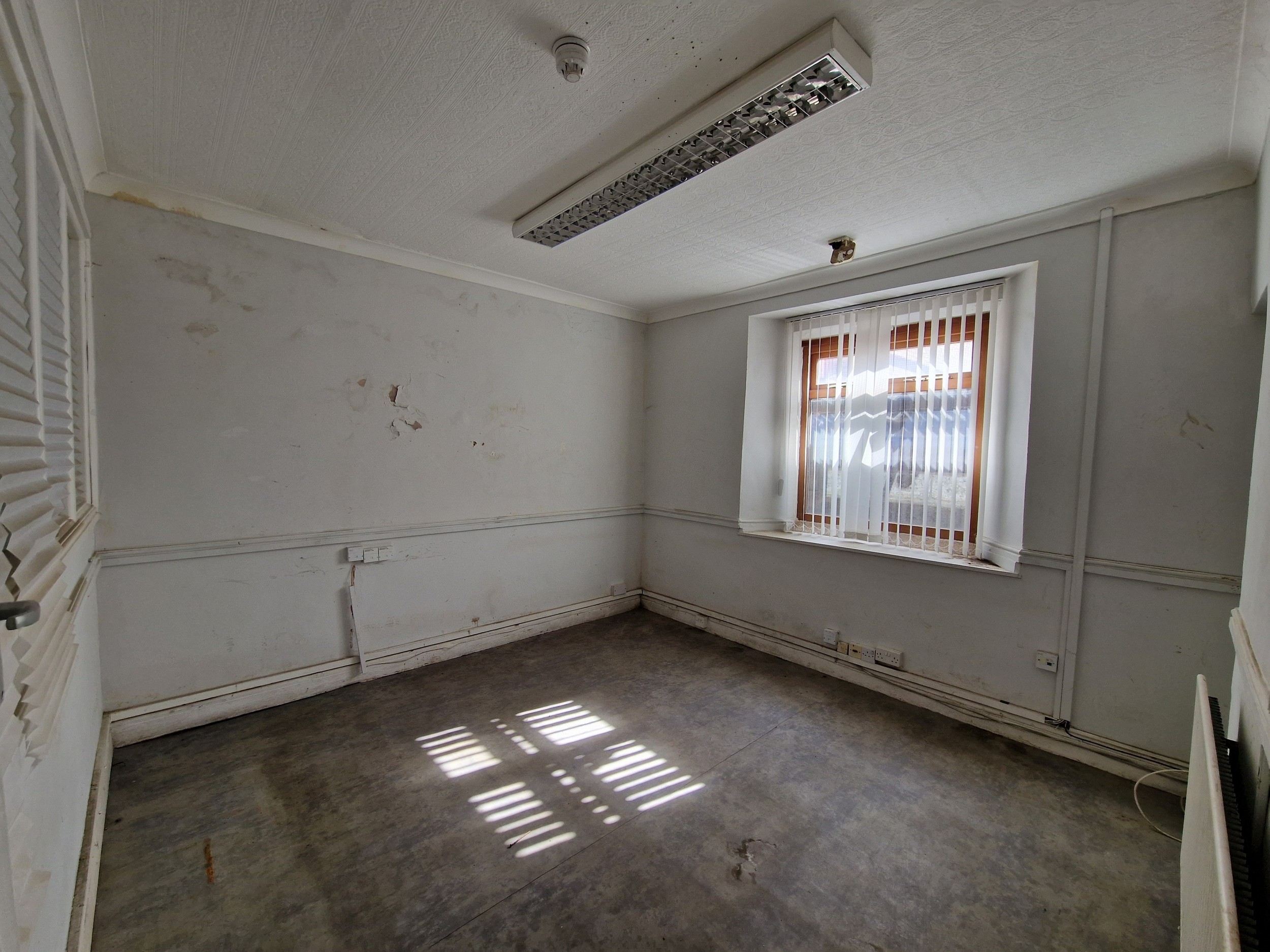
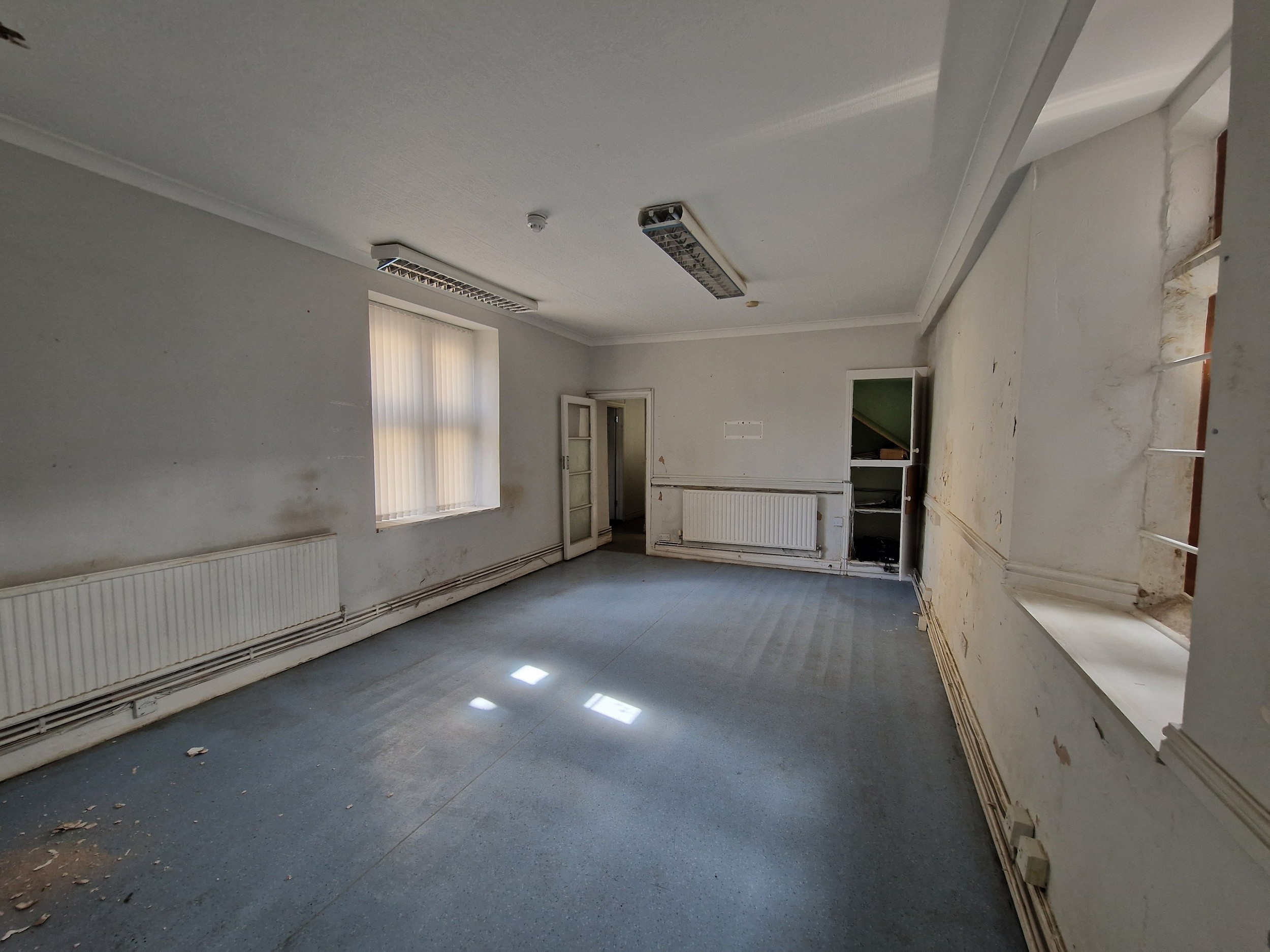
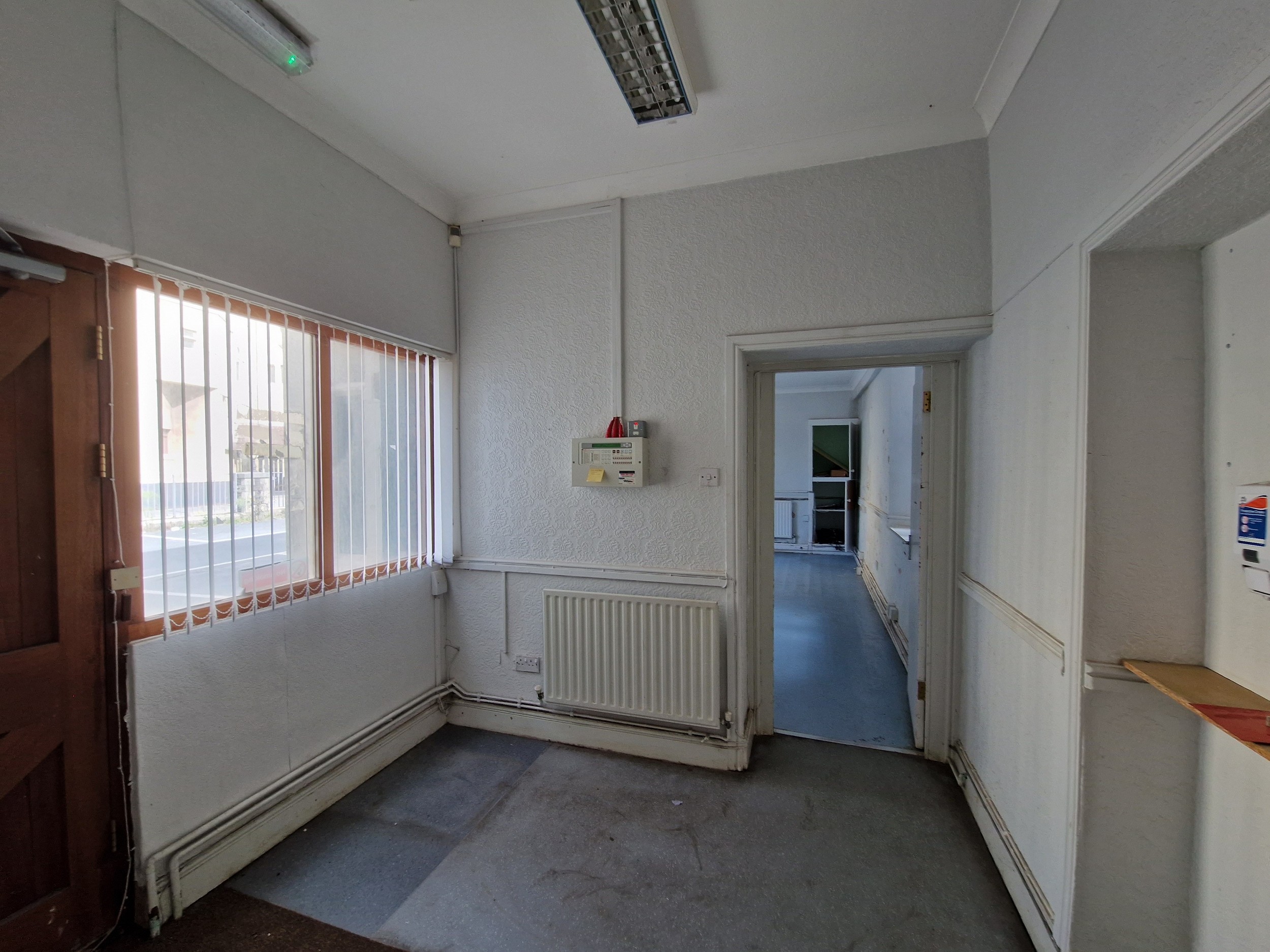
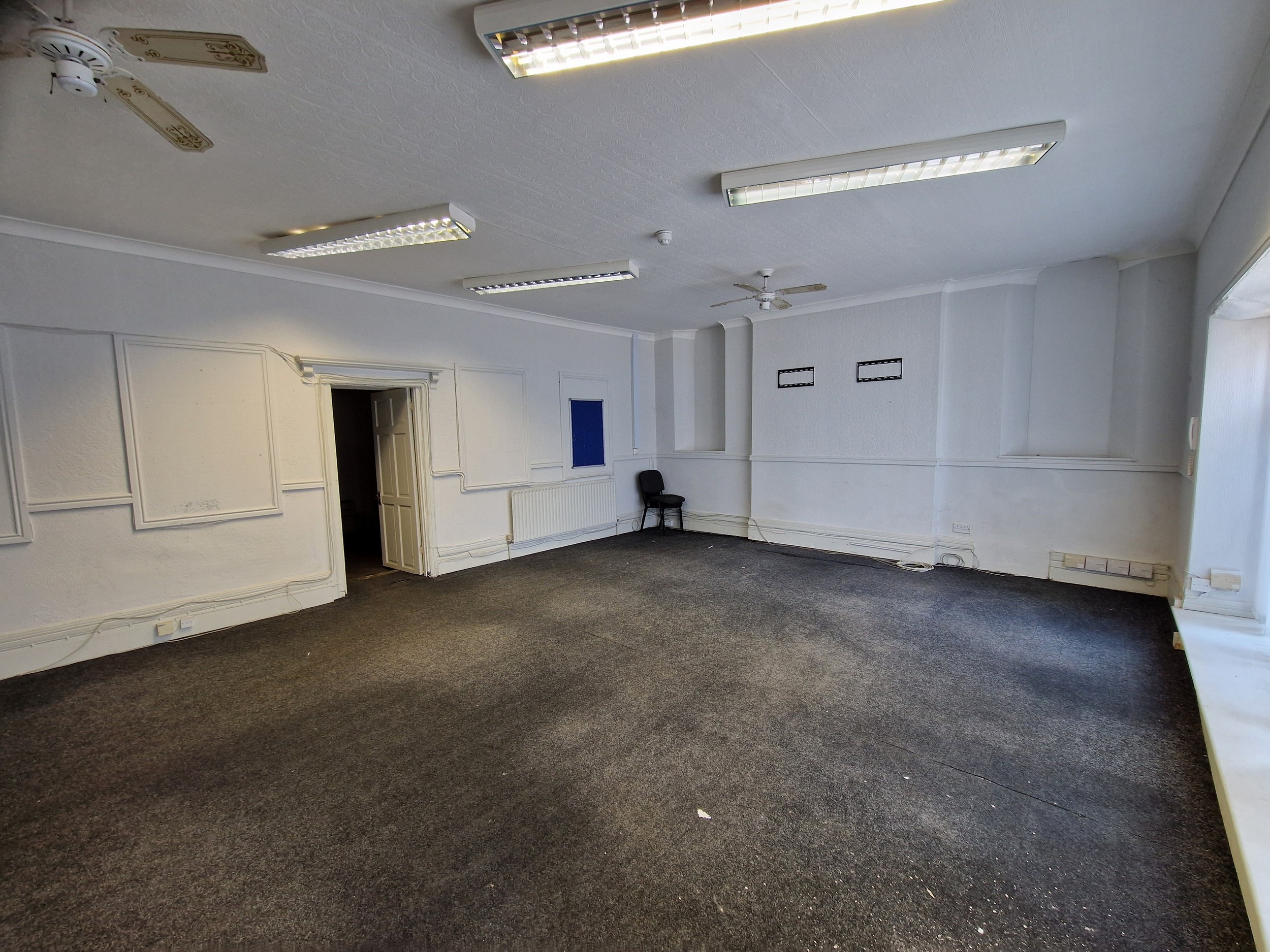
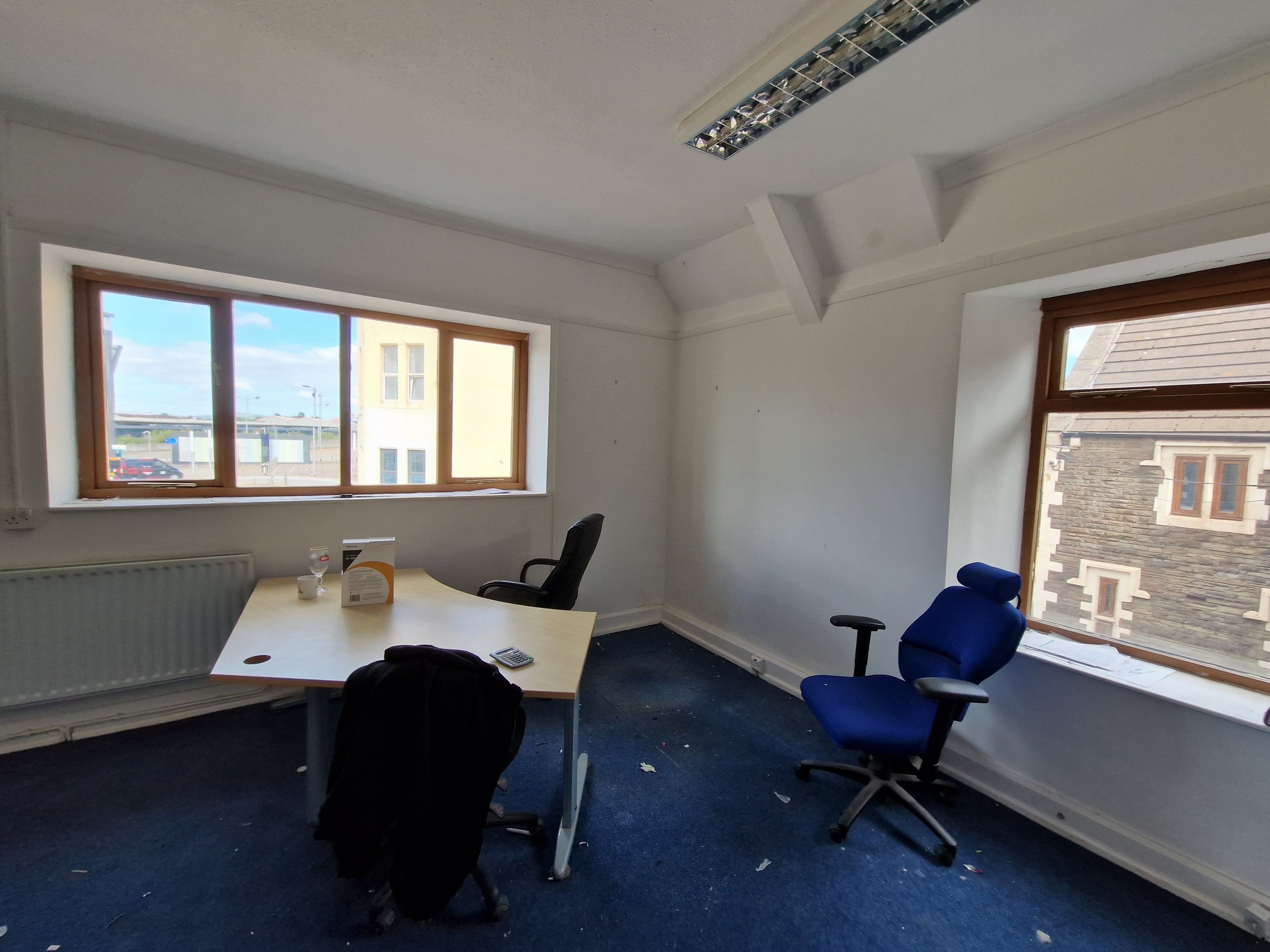

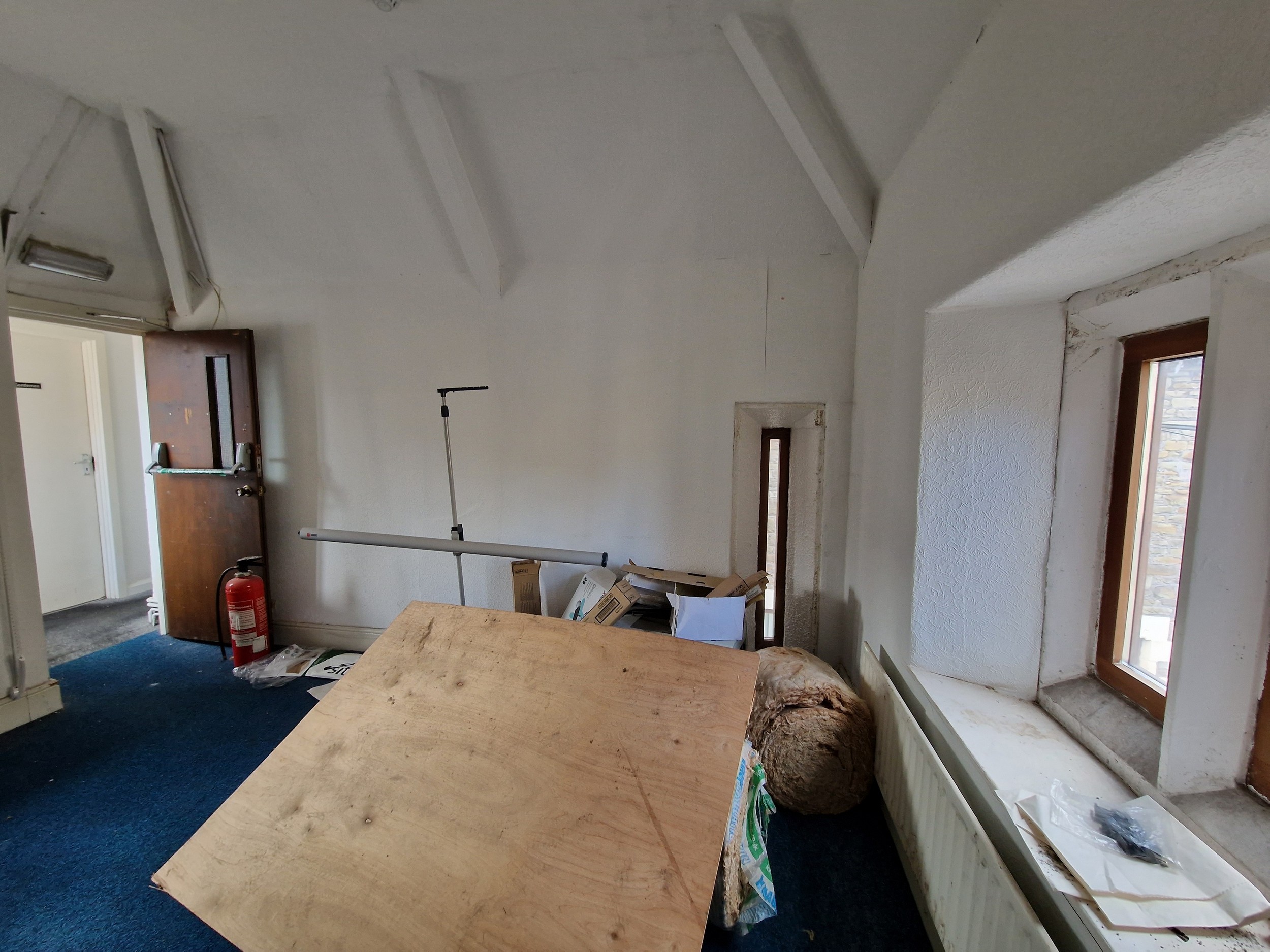

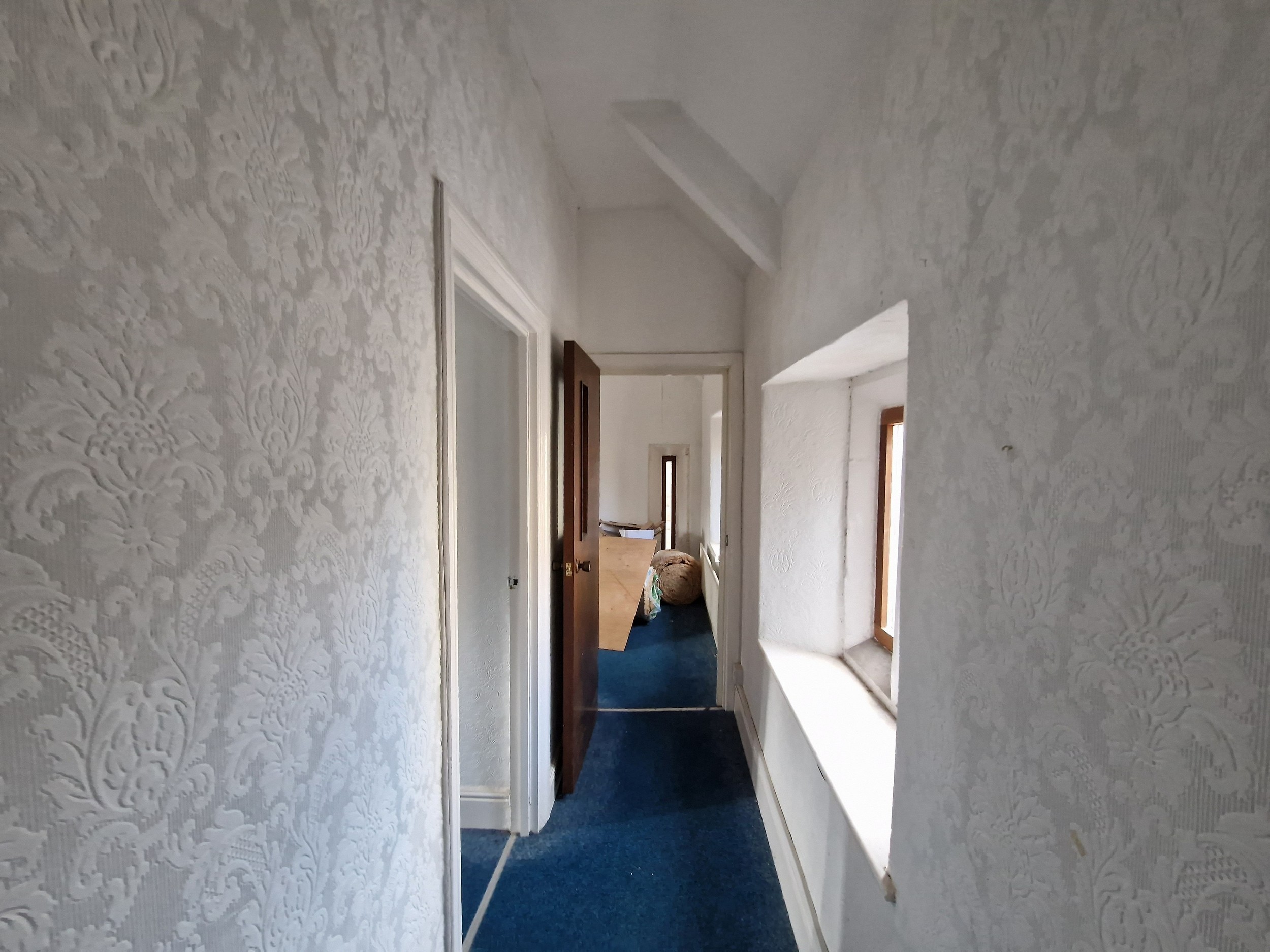
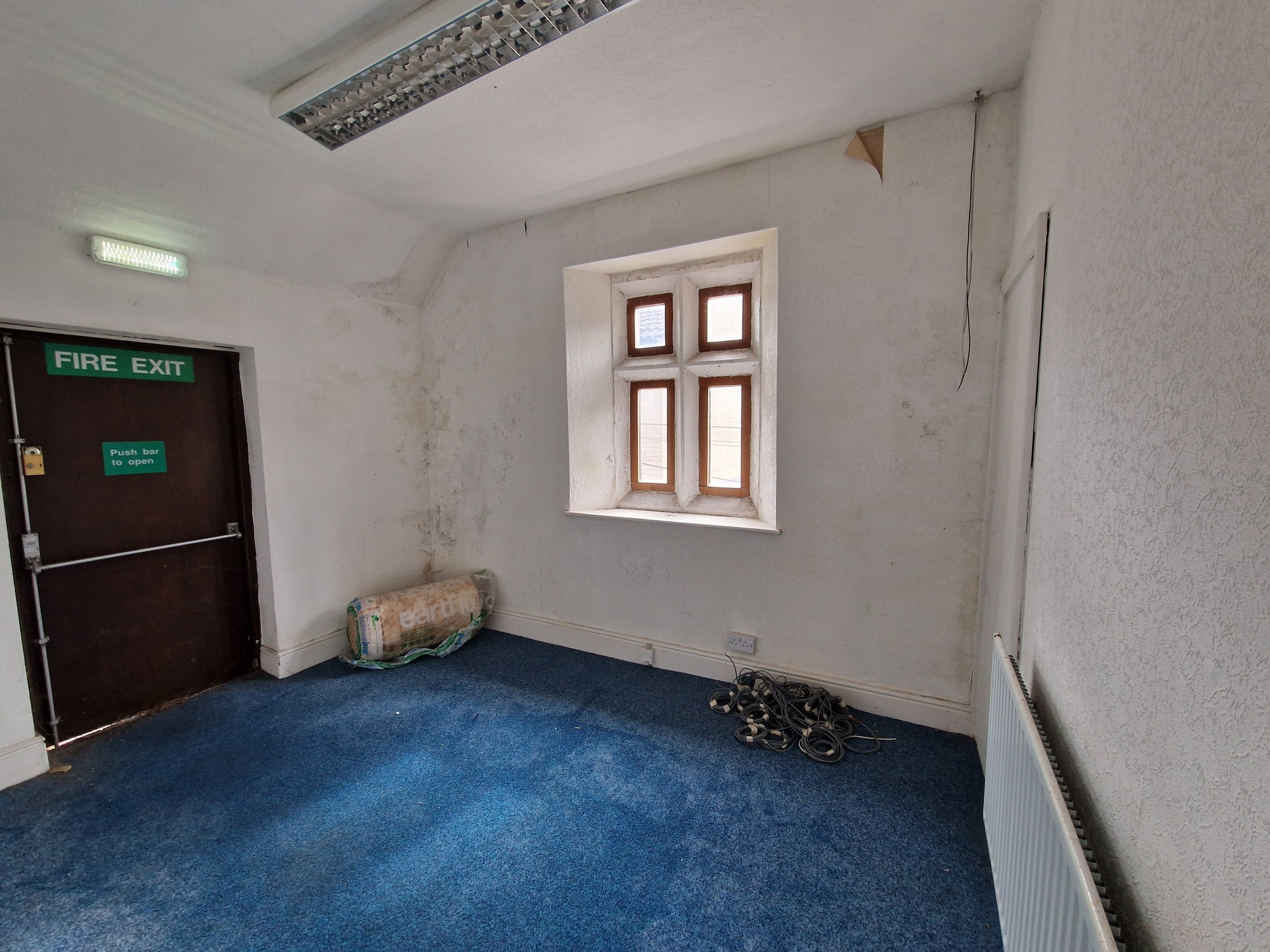
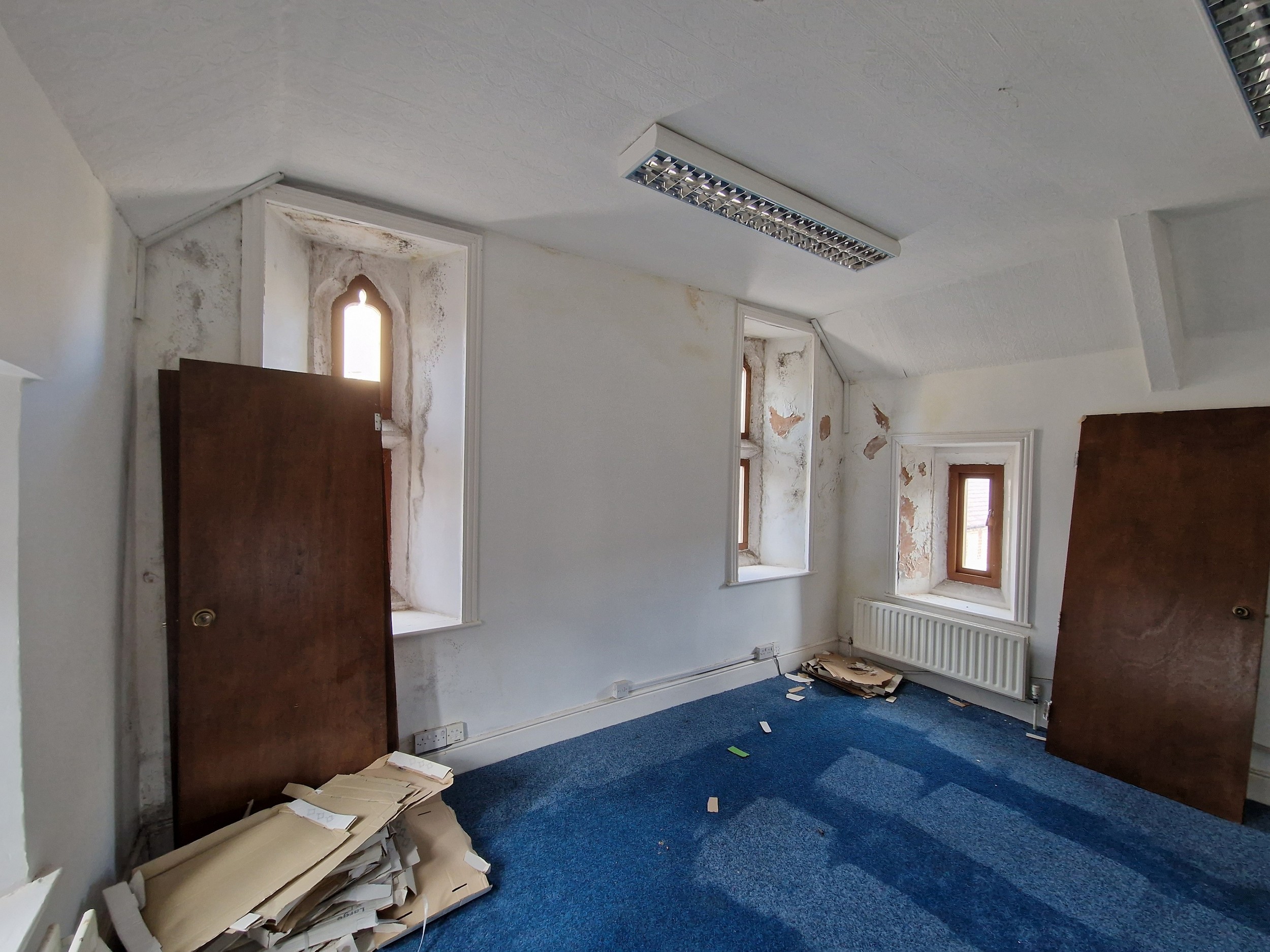
Known also as the Eagle Inn (1874-1890) Port Talbot Hotel, Port Talbot Temperance Hotel, Port Talbot Hotel and Coffee Tavern (1890-1900) Eagle Hotel (1900) Eagle Temperance Hotel, Eagle Buildings (1941-1948) Eagle House (1940s – present)

Beginnings
The story of Eagle House begins in the 1850s with a local stonemason Rees Roderick, but first a bit of scene setting.
It is difficult to imagine now how Port Talbot looked in this era, that is the area east of the River Afan to Taibach.
The area did not see large-scale development until the turn of the 20th century, when the now familiar streets of Station Road and Talbot Road were laid out and the terraced streets of housing behind.
In the 1850s there were very few buildings in this area at all. The South Wales Railway had recently built Port Talbot Station which was relatively isolated, about 1/3rd of a mile away from the town centre of Aberafan. 1
Opposite the station were a few cottages where the Grand Hotel stands today. These were leased from the Margam Estate by the railway, presumably for station staff.
There was a roadway to Taibach, though no buildings along it eastwards after Port Talbot Station.

Rees Roderick
Rees Roderick was a stonemason and builder and worked for the Talbots on the Margam Estate. His father had worked for the Estate as a labourer.
He first rented the site opposite the Port Talbot Station in 1857 to support his stonemasonry business (listed as ‘A piece of land near the Port Talbot Station’) paying £2 annual rent to CRM Talbot. By 1859 he had constructed a shed on the site. The 1861 census shows he employed 2 men at the time.

The name Rees Roderick crops up over and over again in Margam Estate records, with numerous entities of payment to him for repairs and work to buildings all over the estate.
Here are some extracts from those records to give a flavour:
1861
65ft stone crests for Kenfig farm buildings
1865
Work done to the ruins in the garden £30
1868
New pillars at Eastern Lodge Gates, £50
Repairs to the stone screen on the terrace at Margam Park £45,10
1869
New window for the chancel of Kenfig Church £6,11
Carving old stone pillars by Eastern Lodge £39,15,9
Repairing and restoring Llandough Church £254,4,9
1870
2 Octagon pillars at East Entrance to Margam Park £69,10,8
1871
Repairing house in Club Row, Taibach £3,5
Examining and repairing roof of St Brides chancel
1872
Repairing Cottage at Aberavon – Paid £3,9,2
Repairing Cottage at Gwar y Caeau £9,1,4
Restoring Chancel of Wick Church £127,4
1874
Repairs of Port Talbot Inn £31,17,3
Building five cottages at Port Talbot, on site of old Brick Works £431,5,10
Additions, repairs and alteration of Stables and cottages at Llandough Castle

Roderick continued to rent the site for his business for another 12 years, living elsewhere on the Margam Estate, but by 1869 he has built a home for his family on the site. This survives as the front corner portion of Eagle House.
The 1871 census shows Rees Roderick and his family living at the property along with two servants, he is now employing 9 men – the address is recorded only as ‘Port Talbot Station’ with no official street names in use for the area yet, with so few buildings in the area.
The Eagle Inn
In 1850, when the railway first came to Port Talbot, national annual passenger numbers stood at 2.5millon, by the mid 1870s this had ballooned to over 36million.
Although these are national figures it is clear that passenger numbers at Port Talbot station had been increasing considerably over the years.
The station remained isolated nearly 25 years after its construction, with Rees Roderick’s house one of the only new buildings to have been built in the vicinity.
Port Talbot Station itself had no on-site refreshment rooms for passengers waiting for trains – this presented an ideal opportunity for Rees Roderick. In 1874, he opened the house as the Eagle Inn.

This arrangement of using a residential dwelling was commonplace in comparison to a purpose built licensed establishment, hence the term ‘Public House’. At this time the inn was a ‘beer house’ holding only a license to sell beer.
It is possible that the house was operating informally as a refreshment room before it appears as the Eagle Inn in records, even if only for non-alcoholic refreshments.
Rees Roderick was still working as as stonemason at this time and it is likely his wife was running the Eagle Inn. This arrangement wasn’t to last, as in 1875, Mrs Roderick passed away.
Rees Roderick remained at the property and The Eagle Inn continued to trade. He secured a spirit license in 1879 after constructing stables, extending the inn and making improvements to facilities to satisfy the local licensing board.

It is like that this is when the rear block the building was constructed, as it would conform with the existing boundaries of the plot.
By 1881, Rees Roderick, now aged 59 lists his profession as ‘Inn keeper’ having passed the stonemason mantle to his son William to carry on the family trade.
Rees Roderick passes away at the Eagle Inn during 1881.
Roderick Stonemasons – the Roderick family name continued to be associated with stonemasonry in Port Talbot until fairly recently. (information on the family link, and date of business closing would be welcome)
The Margam Estate quickly leased the Inn to David Jones, who was running the Victoria Hotel (Water street), Aberavon. His press advertisement used the first recorded use of the Eagle Hotel name for the premises. The rent by this time is £150 per annum.

During this time the Hotel hosted a function for the Glamorgan Volunteer Rifle Association who had historically met outside the GWR station for some years.
By 1884 the Eagle Hotel was leased to David John. He introduces skittles to the inn and employs additional staff.
In 1886 after 14 years of construction, the Great Western Railway opened the Severn Tunnel – cutting 18 miles off the journey towards London.1
That same year Mr John was summoned for opening the Eagle Inn past licensing hours. His defence, that he was serving visitors who were due to travel by train. The magistrates acknowledged that people used the premises as a waiting place for the railway, but stated that adequate standing room was provided at the station. David was fined 15s.
By 1890 David John has left the Eagle Hotel and is declared bankrupt, owing £604 9s 9d – he put this debt down to bad trade at the Eagle Hotel and his children raiding the till following the death of his wife.

On the 1st January 1890 Cristopher Rice Mansel Talbot passed away, and Emily Talbot inherited the Margam Estate from her father. This was beginning of a new era for the Estate and arguably the town itself.
CRM Talbot was a known supporter of the Temperance movement and it appears Emily Talbot also took this view – to this end she instructed her agent Mr Edward Knox not to lease the hotel again, but instead to set up a Temperance Hotel run by the estate itself.
A newspaper report in October 1890 reads:
“THE EAGLE” INN, opposite the Port Talbot station, is to be henceforth closed as a licensed house for the sale of ales and spirits. This change is made at the express wish of Miss Talbot, of Margam-abbey, who desires that it should be in future used as a coffee tavern, and the house will, we understand, be fitted up for that purpose.
No doubt this will be very acceptable to commercial and other travellers, but to completely meet their requirements, sleeping accommodation should be provided, as it would undoubtedly with such provision be a place of much resort, owing to its proximity to the railway station.
By May 1891 The Port Talbot Hotel (and Coffee Tavern) was announced to the press.
A manager, Henry Charles Gant was put in place to run the establishment, and plans were drawn up to build an extension to accommodate billiards and additional trading space.
Mr Knox was to oversee the operation on behalf of the Margam Estate.
To Builders and Contractors.
TENDERS are invited for the ERECTION of a new BILLIARD ROOM, and COMMERCIAL ROOM at the Port Talbot Hotel and Coffee Tavern, Port Talbot. Plan and Specifications to be seen at the Post Office, Port Talbot.
Tenders to be sent in to E. Knox, Esq., Estate Offices, Margam, Port Talbot, on or before Saturday the 13th June, 1891. All Persons Tendering will be supplied with further particulars, if required, on application to
S. BAKER, Manor yard, Margam, Port Talbot.
May 1891
During this period Mr Knox held meetings of the Margam Local Board at the Port Talbot Hotel.
The Hotel appeared on the front cover of the account books in 1891-2, showing it as a trading entity owned and run by the Margam Estate itself.

The additions to the building, likely the side extension to the original inn opened in November 1891 with a billiards match between Mr J Evans, the billiard table supplier and a Mr W Doherty, who won the match.
Ultimately The Temperance Hotel was not a successful venture for the estate, and 1892 accounts show a loss of £112 with Edward Knox remarking.
“There is little doubt that the success of a Temperance Hotel depends largely upon the Manger and that in this case he was not all that might have been expected.”

The manager is removed by the end of 1892 and the business is instead leased to a Mr Rowe on Emily Talbot’s instruction, to continue to be run as a temperance hotel.
“I venture to think that you have done wisely in letting the Hotel at a fair rent to a Mr Rowe whose experience of such work will probably not only allow him to earn a profit but will thereby fulfil the object which you had in view in starting the place as a Temperance Hotel.”

Little is known about Mr Rowe’s time at the Temperance Hotel.
Eagle Hotel
In 1896 a meeting of the Glamorgan Rifle Volunteer Association is called at the Eagle Hotel
In 1897 a meeting of the Mid-Glamorgan Conservative Association was held there, with E Knox in attendance.

That same year, the Port Talbot Railway and Docks Company completed their railway from Port Talbot Docks to Maesteg. This line terminated for passengers at the Port Talbot Central Station, located right next to the Eagle Hotel – the building now served two railway stations.

Between 1898-1900 the Grand Hotel was built next door and the Margam Estate allowed this building to be a licenced establishment. It contained 20 bedrooms, catering for the same commercial traveller clients that the Temperance Hotel was fitted out for.
Despite this, the Eagle Temperance Hotel continued to trade, with a Miss Ida Withall the proprietor from 1899 to 1906.
The building continued to trade as a Temperance Hotel until at least 1916 and remained listed as such on the Electoral Registers until the end of the 1920s.
Mabel and John Daniels were listed as residents on the 1918 electoral registers.

In the 1920s the site housed several businesses in the outbuildings to the rear, possibly in former stables or even workshops used by Rees Roderick.
This included an upholstery business run by a Mr Mills, and a garage and repair shop for a truck hire and removal business run by Trevor Jones. John Daniels also used the building as a patternmakers shop.
A large fire broke out in these buildings in 1921, causing significant damage..

In 1940 at least part of building was in use as the Margam Estate Office, with Mabel and John Daniels still also listed as residents.
This lasted until June 31st 1940 when a bomb exploded in the courtyard. The building was vacant for around 12 months following the damage.
At this time in 1941 the newly formed 499 Squadron Air Training Corps were looking for a headquarters and the Commanding Officer P H Burton managed to secure the premises for their use.
It seems the building needed a fair bit of work before they could make use of it with ‘many gallons of water’ needed to clean the building up, along with clearing out damaged areas.
The squadron produced several booklets called the ‘Talbot Eagle’, the name of which they took from their headquarters.

In 1942 they created a canteen for the unit to cater for their parade nights and other special occasions. The squadron required a license to operate the canteen due to wartime rationing. The note below specifies the foods allowed. .

Some notable figures were associated with the squadron, including Phillip H Burton, the original commanding officer and a local school teacher, who founded the YMCA drama society.
With Burton at the helm, the squadron were involved in a number of amateur productions, including a radio play he wrote, ‘Venture Adventure’, performed on the BBC Home Service in 1941, and a production of ‘Youth at the Helm’ at the YMCA Hall. These activities must have been unusual for an ATC squadron!
A young Richard Burton (then known as Richard Jenkins) was a member of the squadron at this time and performed in ‘Youth at the Helm’. He later took the name of his mentor and commanding officer, P H Burton.

499 Squadron were based at the building until at least 1945, Burton was awarded an MBE in that year, possibly for services to the ATC.
The 499 Squadron is still in existence today, having had several bases over the years, including at the Drill Hall, Forge Road, Morrison Road and Green Street, Aberavon. They are currently back at the remains of the Drill Hall site, co-located with the Army Cadets.
Port Talbot Borough considered requisitioning the building for conversion to housing in 1948, along with Royal Buildings on Talbot Road, but this doesn’t appear to have been progressed.

Following WWII and into the 1950s the building is listed again as the offices of the Margam Estate. Alongside this other notable businesses are also based there in this period, including Andrew Scott the builders.
Part of the building remains occupied as a dwelling during this period by Mabel and John Daniels.
Several businesses traded from the building through the latter half of the 20th century including John D Wood Estate Agents (who handled Margam estate affairs following the departure of the last agent) and the Wesleyan assurance society.
Almost 100 years of continued residential use ends in 1961, when Mabel Daniels passes away, having lived at Eagle House for at least 43 years.

By the early 1960s the building appears to have been altered, the ground floor of the building was rendered, some windows enlarged and the original doorway blocked up. The biggest change being the addition of a lean-to extension to the front, to house a new staircase, presumably to facilitate interior changes to the building.

In 1999 the building housed the first constituency office of Dr Brian Gibbons, the local Assembly member for the newly created Welsh Assembly.
In 2001, the first parliamentary constituency office for Aberavon was also sited in the building, opened by Dr Hywel Francis.
Both representatives remained there until 2010 before relocating to other premises nearby.
Some minor refurbishments were carried out in 2012 consisting of the re-rendering of the exterior, some works to windows and internal refurbishments. This revealed some of the features for the first time in around 40 years.

Eagle House is now threatened with demolition.
The building is incredibly important for its association with the very early development of Port Talbot, as the oldest commercial building remaining and one of the oldest buildings of any kind remaining in the area.
Although not remarkable in age by general standards, a building of this age is incredibly rare and unusual in Port Talbot, due to the significant unsympathetic redevelopment that has taken place throughout the 20th century.
The story of its builder and first occupier, Rees Roderick, is intrinsically linked to the story of the Margam Estate. The building is a clear and unique physical presence showing how the estate supported local business and the prosperity of working people in Port Talbot.
Mr Roderick himself can also lay claim to building at least one of the Grade II listed structures in Margam Park, the octagonal pillars at the East Lodge. He was also responsible for the extensive restoration of the Grade II listed Wick Church, being commissioned by CRM Talbot to carry out the work.
It’s likely given his prolific work for the Talbots that other such buildings in the former parish and estate could be attributed to him with further research.
The buildings use as an Inn in the 1870s has a direct link to the national development of the railways in the UK and the GWR expansion in to Wales. The opening of the Inn coming at a time when passenger numbers ballooned.
The remains of cellar accesses to the exterior of the building allow this part of the buildings life to be read from the fabric of the building. As does the continued physical proximity to the railway station.
It’s further and closer link to the Margam Estate, as the Port Talbot Temperance Hotel, is culturally significant in being the only surviving building from this movement in Port Talbot.
The building can also lay claim to being the only public establishment run by the Margam Estate in the Port Talbot area, being directly run by the estate at the express wish of Emily Talbot herself. The estate commissioned the extensions and alterations to the building to meet this purpose and employed a manager to run it.
Emily Talbot took a direct interest in this venture as shown by the correspondence from her agent Mr Knox.
This, the association with Rees Roderick and its later use as the Margam Estate office give the building a group association with the wider Margam Estate, and a unique significance with it being this far westwards and so near the nucleus of the town.
The building has had further notable involvement in key events, such as being struck by a German bomb in 1940, leading to it hosting the 499 ATC squadron in WWII, as its first headquarters – the squadron formed by notable playwright P H Burton MBE, and attended by Richard Burton.
In more modern times, the building has been a physical office presence for our local representatives, the first such building to be put to that use in the Aberavon constituency, signifying a political and social shift where politicians have become more accountable and accessible to those who they represent.
The buildings design, materials, scale and eclectic layout are in contrast to the surrounding buildings, the varying uses, alterations and extensions are clearly legible and give the building a unique and irreplaceable character.
The location of the building at a central point in the town centre, opposite the railway station, is also critical in terms of assessing its significance – the building is visible to every disembarking passenger though the viewpoint window of the new railway station, to passengers using the bus interchange and those travelling along the A48 corridor.
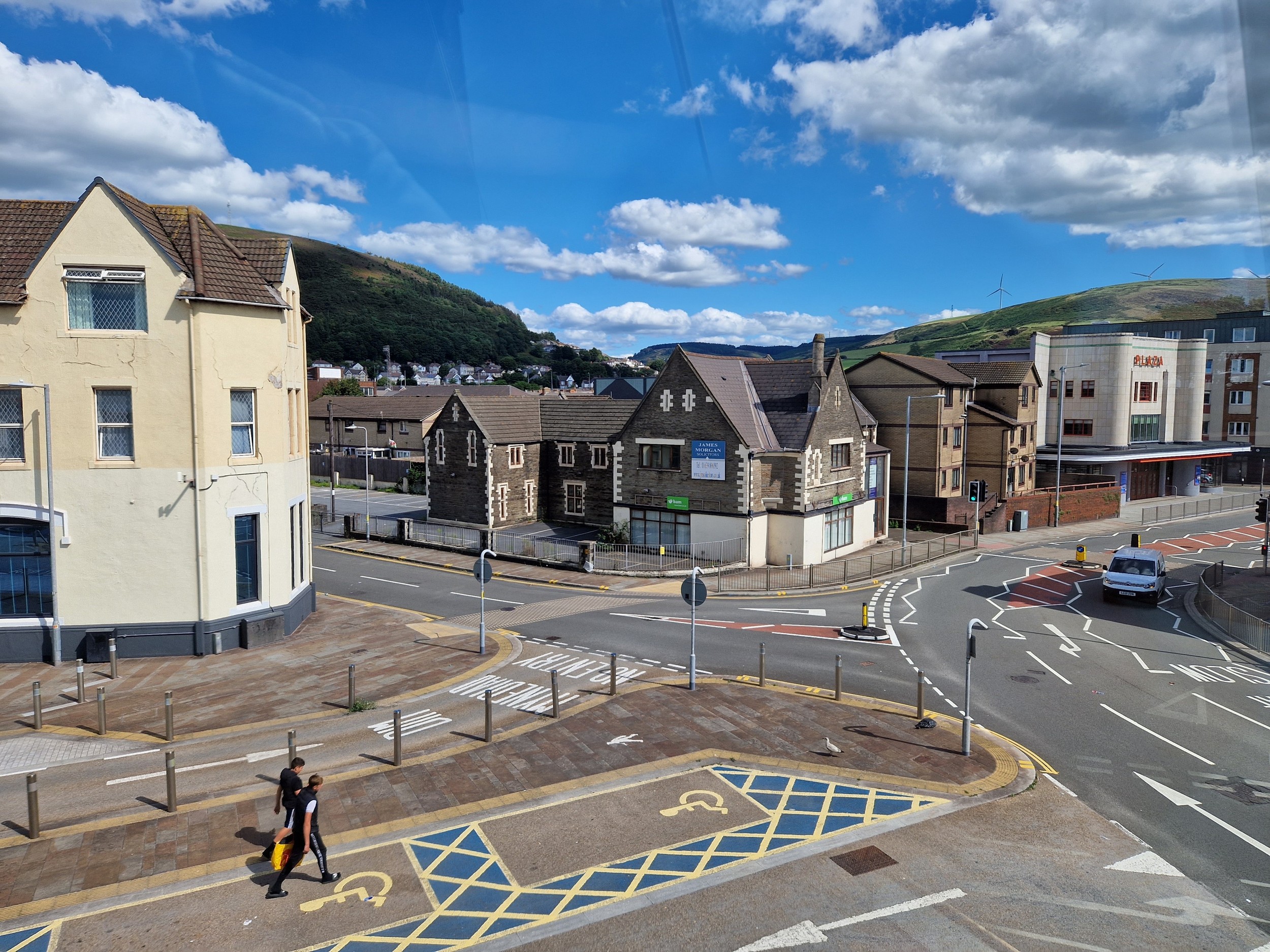

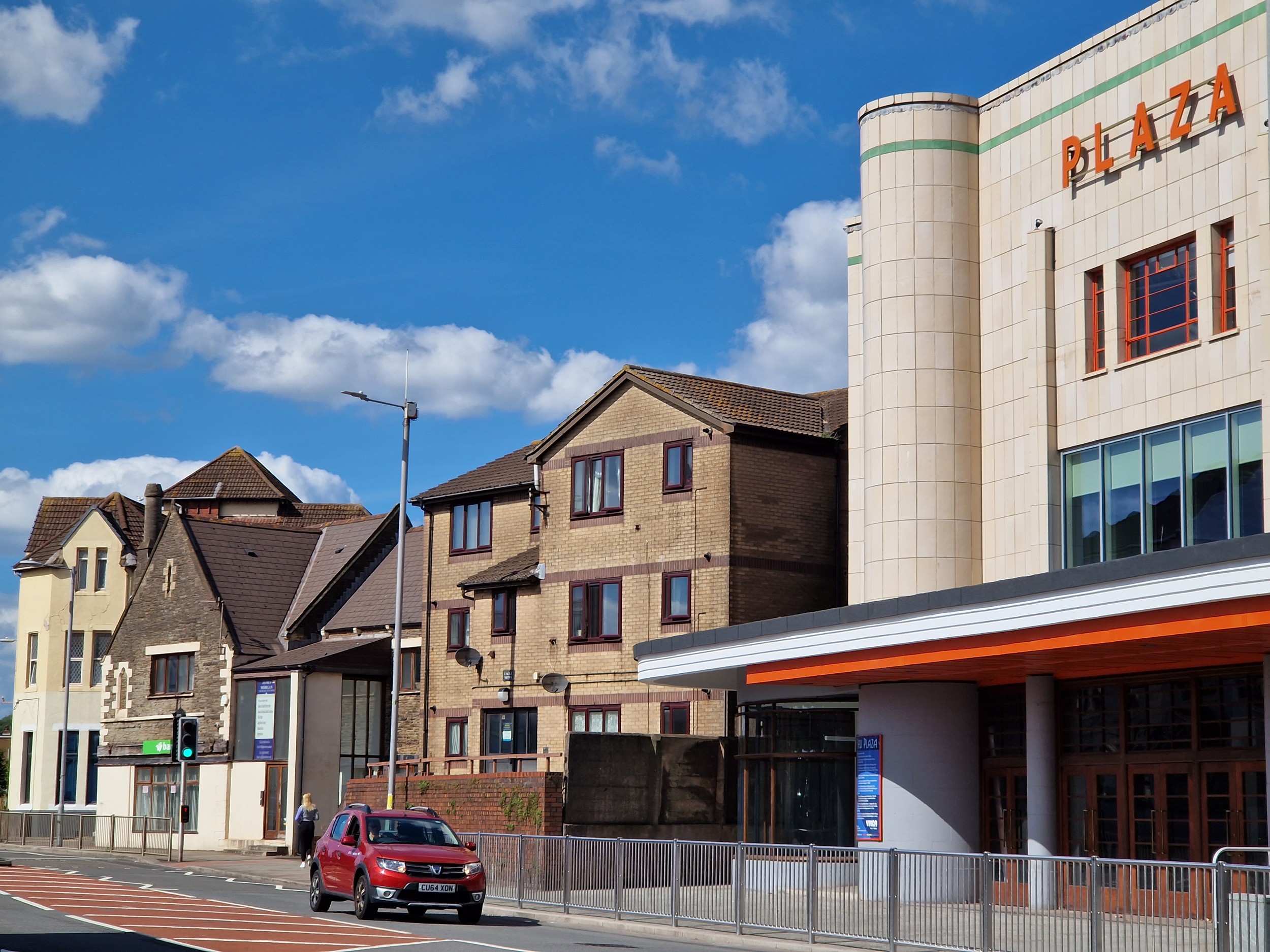
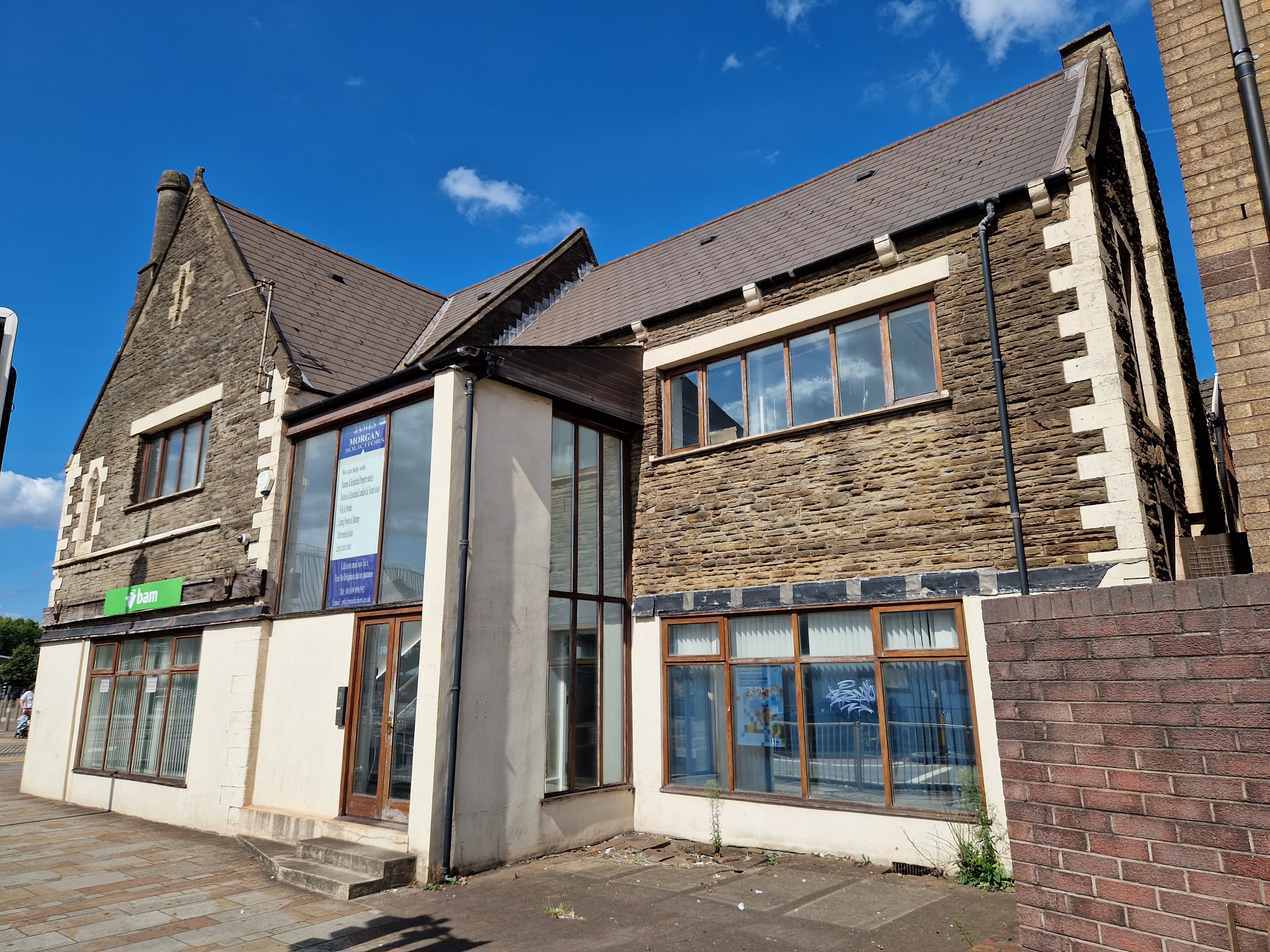

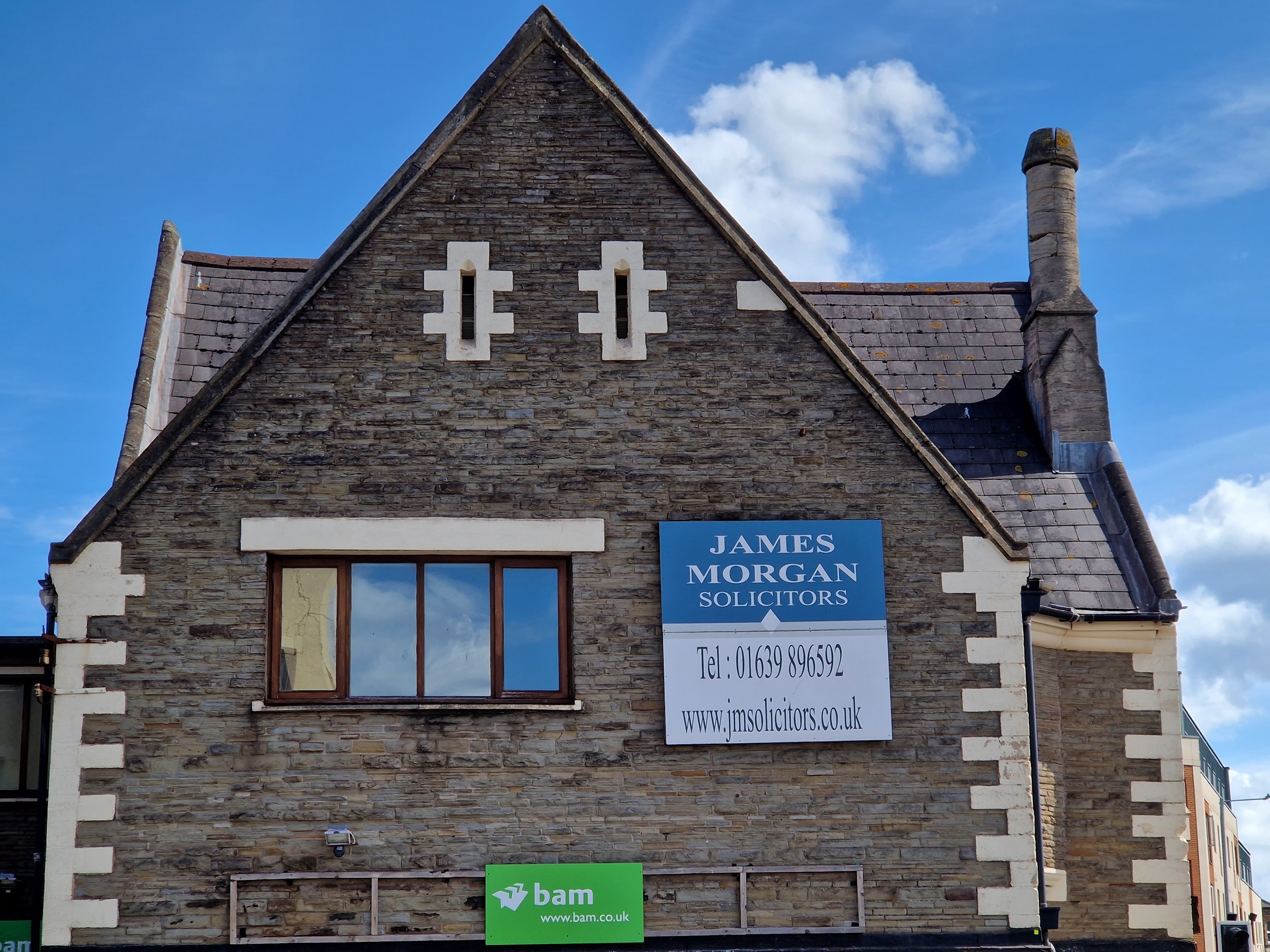

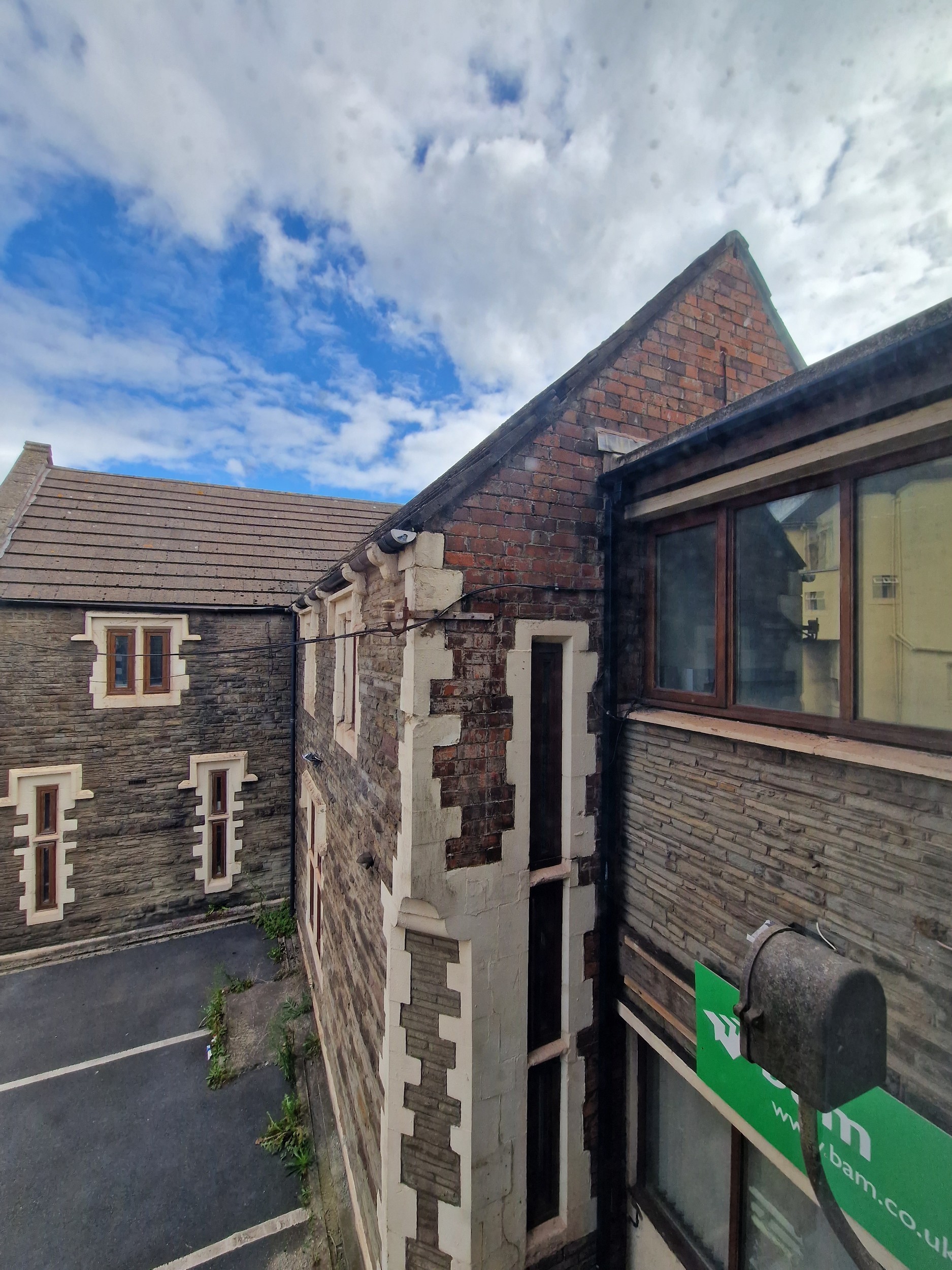
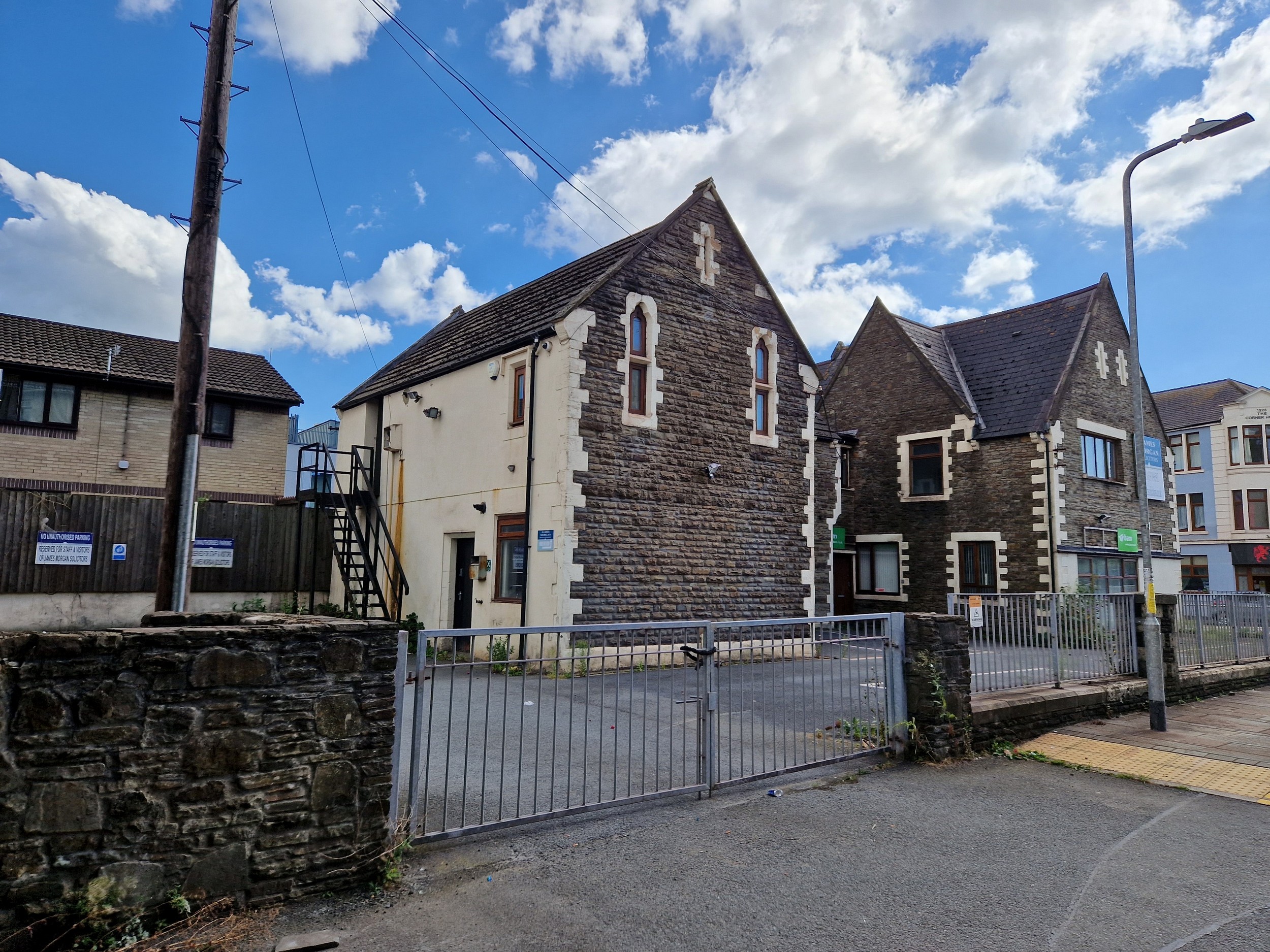
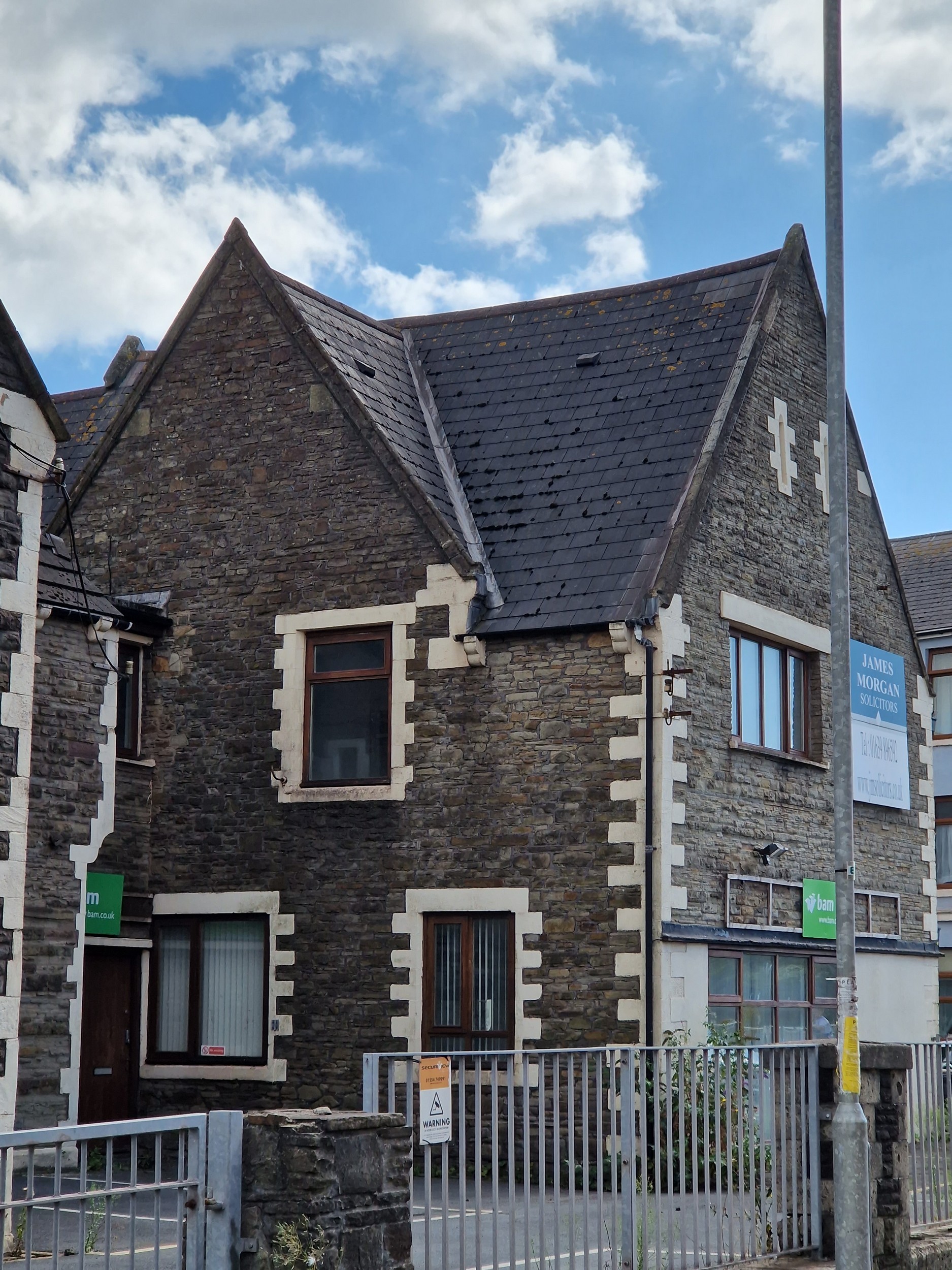
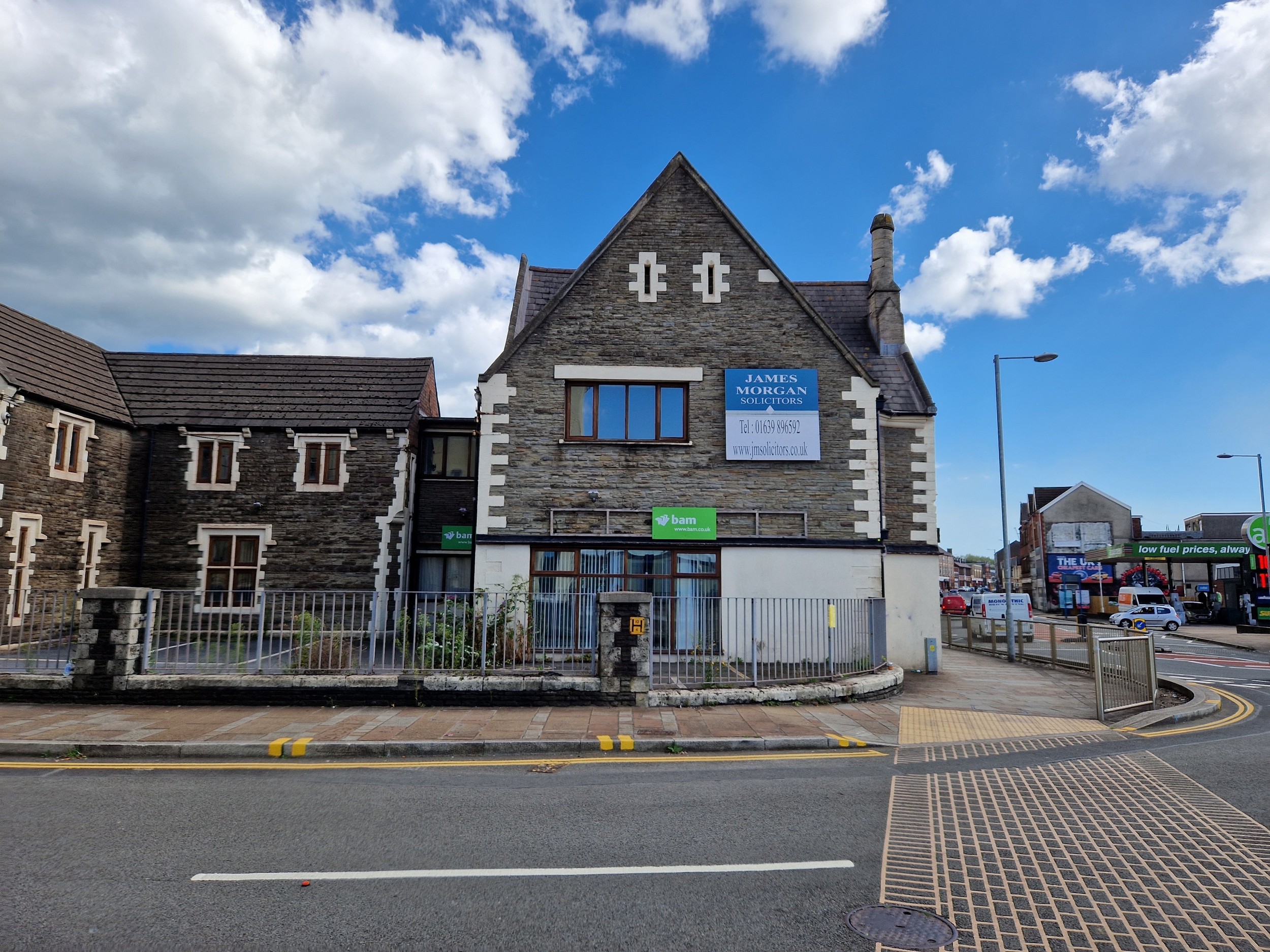
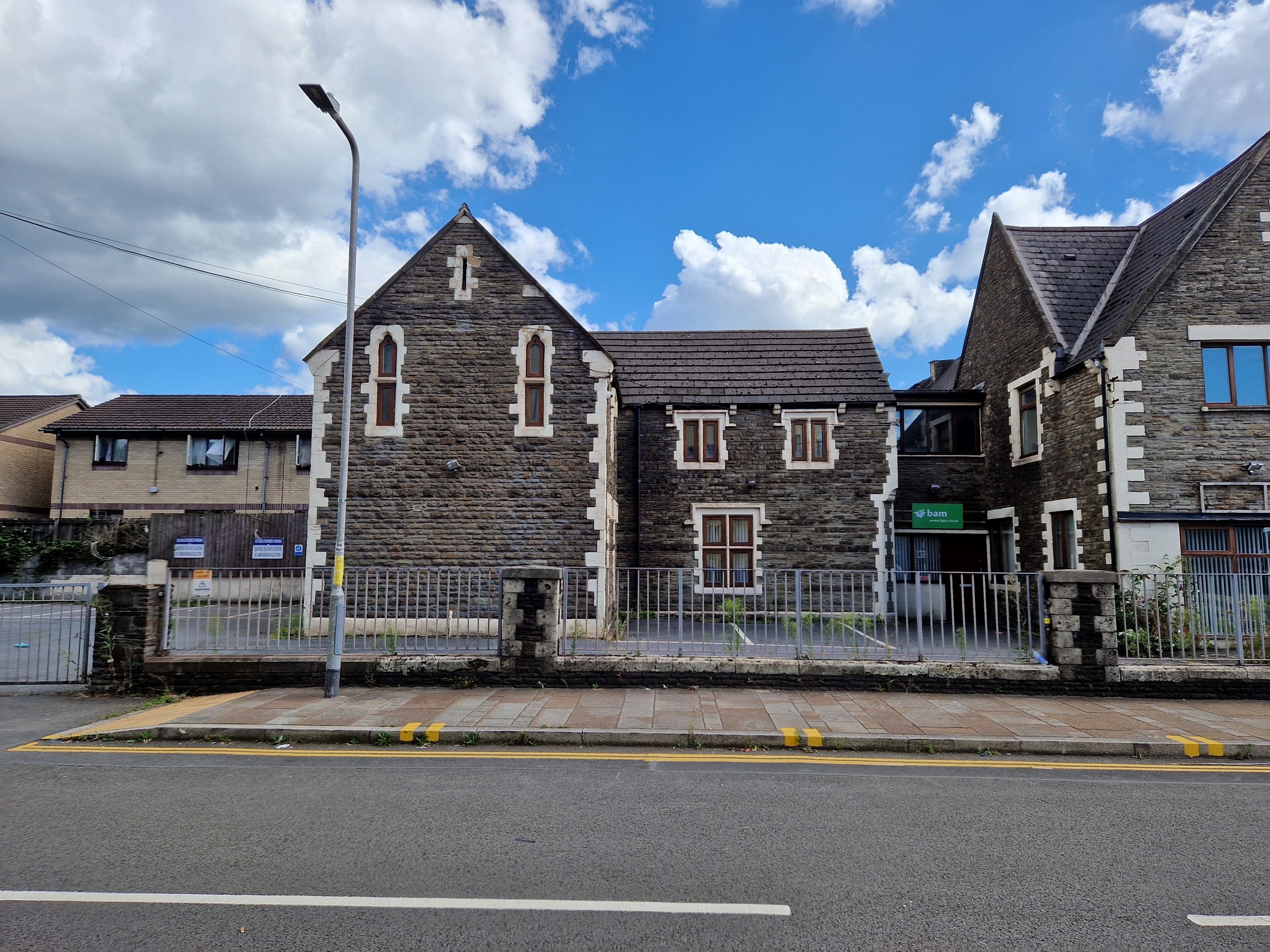
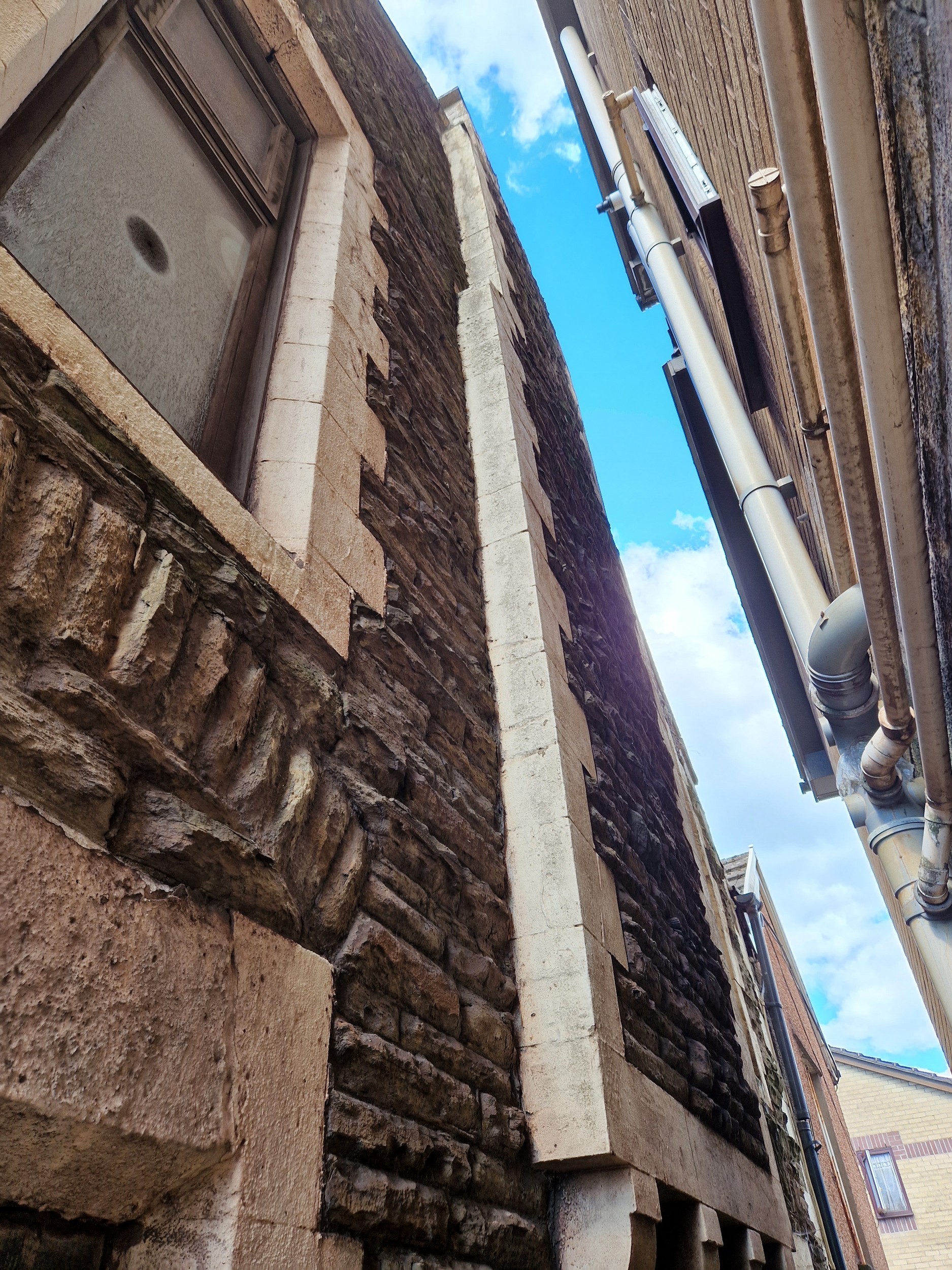
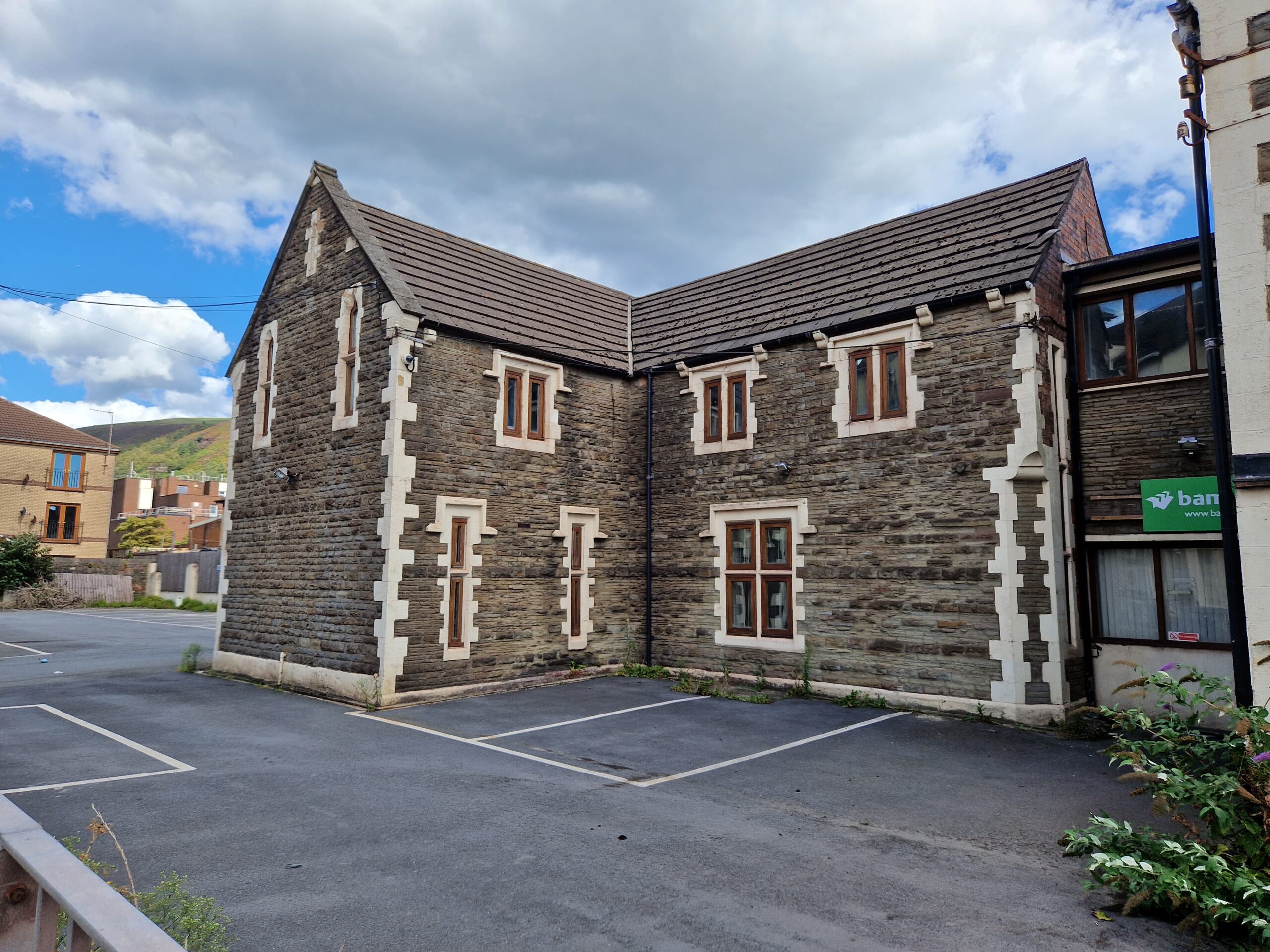
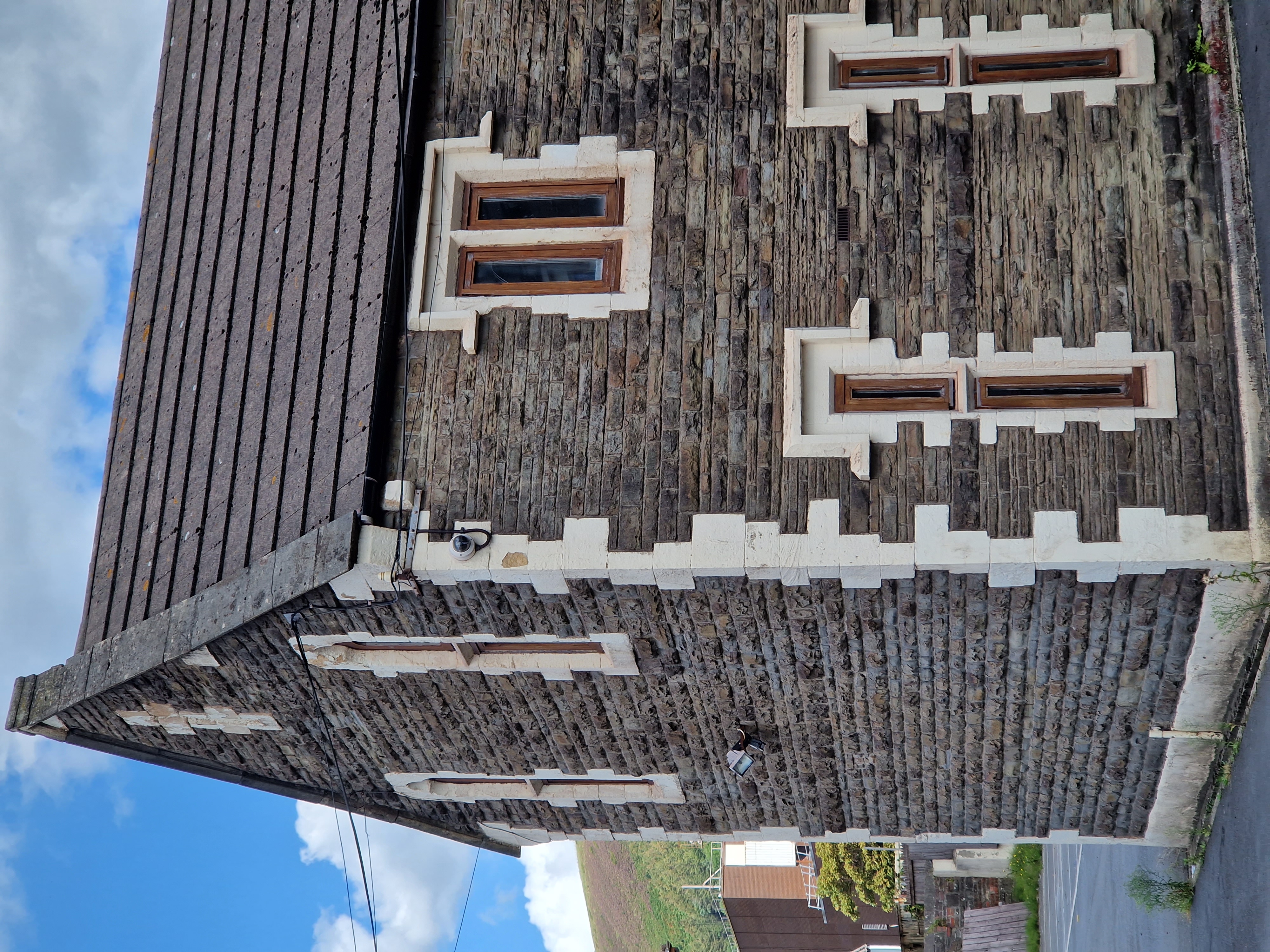

Thanks must go to several people and organisations for helping me pull this piece together in a record time of 3 weeks!
Allen Blethyn – descendant of Rees Roderick and legendary local historian, for providing me a head start on this part of the buildings’ history.
Sally Jones, D John Adams and John Vivian Hughes – all of whom have published works I’ve made reference to or used here, and for allowing me to pick their brains and collections.
Lynne Rees – for her help proof-reading, correcting my rusty grammar, running some FindMyPast searches for me and deciphering some hard to read handwriting.
Port Talbot Historical Society – members past and present whose collections and photographs have been referenced or used here.
West Glamorgan Archives Service, Glamorgan Archives and Neath Port Talbot Libraries – who have provided many of the sources used in the article and helpful guidance along the way.
Welsh Newspapers Online and the British Newspaper Archive – both invaluable sources of information which have been critical to writing this article.
499 Squadron – for access to their archive.
If anyone has any relevant information, photographs, pointers or corrections, please email me at seanpursey@outlook.com
12/09/2022 – edited references to the extensions to the building following further analysis of the evidence. This change to the article now shows the rear extension to be the earlier one and the side extension to be later, this was originally written as the opposite.
Known also as the Eagle Inn (1874-1890) Port Talbot Hotel, Port Talbot Temperance Hotel, Port Talbot Hotel and Coffee Tavern (1890-1900) Eagle Hotel, Eagle Temperance Hotel (1900-1920s) Eagle Buildings (1941-1948) Eagle House (1940s – present)

Beginnings
The story of Eagle House begins in the 1850s with a local stonemason Rees Roderick, but first a bit of scene setting.
It is difficult to imagine now how Port Talbot looked in this era, that is the area east of the River Afan to Taibach.
The area did not see large-scale development until the turn of the 20th century, when the now familiar streets of Station Road and Talbot Road were laid out and the terraced streets of housing behind.
In the 1850s there were very few buildings in this area at all. The South Wales Railway had recently built Port Talbot Station which was relatively isolated, about 1/3rd of a mile away from the town centre of Aberafan. 1
Opposite the station were a few cottages where the Grand Hotel stands today. These were leased from the Margam Estate by the railway, presumably for station staff. 2
There was a roadway to Taibach, though no buildings along it eastwards after Port Talbot Station.

Rees Roderick
Rees Roderick was a stonemason and builder and worked for the Talbots on the Margam Estate. His father had worked for the Estate as a labourer. 3
He first rented the site opposite the Port Talbot Station in 1857 to support his stonemasonry business (listed as ‘A piece of land near the Port Talbot Station’) paying £2 annual rent to CRM Talbot. By 1859 he had constructed a shed on the site. The 1861 census shows he employed 2 men at the time. 4

The name Rees Roderick crops up over and over again in Margam Estate records, with numerous entities of payment to him for repairs and work to buildings all over the estate5.
Here are some extracts from those records to give a flavour:
1861
65ft stone crests for Kenfig farm buildings
1865
Work done to the ruins in the garden £30
1868
New pillars at Eastern Lodge Gates, £50
Repairs to the stone screen on the terrace at Margam Park £45,10
1869
New window for the chancel of Kenfig Church £6,11
Carving old stone pillars by Eastern Lodge £39,15,9
Repairing and restoring Llandough Church £254,4,9
1870
2 Octagon pillars at East Entrance to Margam Park £69,10,8
1871
Repairing house in Club Row, Taibach £3,5
Examining and repairing roof of St Brides chancel
1872
Repairing Cottage at Aberavon – Paid £3,9,2
Repairing Cottage at Gwar y Caeau £9,1,4
Restoring Chancel of Wick Church £127,4
1874
Repairs of Port Talbot Inn £31,17,3
Building five cottages at Port Talbot, on site of old Brick Works £431,5,10
Additions, repairs and alteration of Stables and cottages at Llandough Castle

Roderick continued to rent the site for his business for another 12 years6, living elsewhere on the Margam Estate, but by 1869 he has built a home for his family on the site. This survives as the front corner portion of Eagle House.
The 1871 census shows Rees Roderick and his family living at the property along with two servants, he is now employing 9 men – the address is recorded only as ‘Port Talbot Station’ with no official street names in use for the area yet, with so few buildings in the area.
The Eagle Inn
In 1850, when the railway first came to Port Talbot, national annual passenger numbers stood at 2.5millon, by the mid 1870s this had ballooned to over 36million. 7
Although these are national figures it is clear that passenger numbers at Port Talbot station had been increasing considerably over the years.
The station remained isolated nearly 25 years after its construction, with Rees Roderick’s house one of the only new buildings to have been built in the vicinity.
Port Talbot Station itself had no on-site refreshment rooms for passengers waiting for trains – this presented an ideal opportunity for Rees Roderick. In 1874, he opened the house as the Eagle Inn. 8

This arrangement of using a residential dwelling was commonplace in comparison to a purpose built licensed establishment, hence the term ‘Public House’. At this time the inn was a ‘beer house’ holding only a license to sell beer. 9
It is possible that the house was operating informally as a refreshment room before it appears as the Eagle Inn in records, even if only for non-alcoholic refreshments.
Rees Roderick was still working as as stonemason at this time and it is likely his wife was running the Eagle Inn. This arrangement wasn’t to last, as in 1875, Mrs Roderick passed away. 10
Rees Roderick remained at the property and The Eagle Inn continued to trade. He secured a spirit license in 1879 after constructing stables, extending the inn and making improvements to facilities to satisfy the local licensing board. 11

It is possible that this is when the second half of the front block of the building was constructed.
By 1881, Rees Roderick, now aged 59 lists his profession as ‘Inn keeper’ having passed the stonemason mantle to his son William to carry on the family trade. 12
Rees Roderick passes away at the Eagle Inn during 1881.13
Roderick Stonemasons – the Roderick family name continued to be associated with stonemasonry in Port Talbot until fairly recently. (information on the family link, and date of business closing would be welcome)
The Margam Estate quickly leased the Inn to David Jones, who was running the Victoria Hotel (Water street), Aberavon.14 His press advertisement used the first recorded use of the Eagle Hotel name for the premises. The rent by this time is £150 per annum. 15

During this time the Hotel hosted a function for the Glamorgan Volunteer Rifle Association who had historically met outside the GWR station for some years.
By 1884 the Eagle Hotel was leased to David John. He introduces skittles to the inn and employs additional staff. 16
In 1886 after 14 years of construction, the Great Western Railway opened the Severn Tunnel – cutting 18 miles off the journey towards London.1
That same year Mr John was summoned for opening the Eagle Inn past licensing hours. His defence, that he was serving visitors who were due to travel by train. The magistrates acknowledged that people used the premises as a waiting place for the railway, but stated that adequate standing room was provided at the station. David was fined 15s. 16
By 1890 David John has left the Eagle Hotel and is declared bankrupt, owing £604 9s 9d – he put this debt down to bad trade at the Eagle Hotel and his children raiding the till following the death of his wife. 17

On the 1st January 1890 Cristopher Rice Mansel Talbot passed away, and Emily Talbot inherited the Margam Estate from her father. This was beginning of a new era for the Estate and arguably the town itself. 18
CRM Talbot was a known supporter of the Temperance movement 18a and it appears Emily Talbot also took this view18b – to this end she instructed her agent Mr Edward Knox not to lease the hotel again, but instead to set up a Temperance Hotel run by the estate itself. 19
A newspaper report in October 1890 reads: 19a
“THE EAGLE” INN, opposite the Port Talbot station, is to be henceforth closed as a licensed house for the sale of ales and spirits. This change is made at the express wish of Miss Talbot, of Margam-abbey, who desires that it should be in future used as a coffee tavern, and the house will, we understand, be fitted up for that purpose.
No doubt this will be very acceptable to commercial and other travellers, but to completely meet their requirements, sleeping accommodation should be provided, as it would undoubtedly with such provision be a place of much resort, owing to its proximity to the railway station.
By May 1891 The Port Talbot Hotel (and Coffee Tavern) was announced to the press.
A manager, Henry Charles Gant was put in place to run the establishment, and plans were drawn up to build an extension to accommodate billiards and additional trading space. 20
Mr Knox was to oversee the operation on behalf of the Margam Estate.
To Builders and Contractors.
TENDERS are invited for the ERECTION of a new BILLIARD ROOM, and COMMERCIAL ROOM at the Port Talbot Hotel and Coffee Tavern, Port Talbot. Plan and Specifications to be seen at the Post Office, Port Talbot.
Tenders to be sent in to E. Knox, Esq., Estate Offices, Margam, Port Talbot, on or before Saturday the 13th June, 1891. All Persons Tendering will be supplied with further particulars, if required, on application to
S. BAKER, Manor yard, Margam, Port Talbot.
May 1891
During this period Mr Knox held meetings of the Margam Local Board at the Port Talbot Hotel.21
The Hotel appeared on the front cover of the account books in 1891-2, showing it as a trading entity owned and run by the Margam Estate itself.

The additions to the building, probably the rear block, opened in November 1891 with a billiards match between Mr J Evans, the billiard table supplier and a Mr W Doherty, who won the match. 22
Ultimately The Temperance Hotel was not a successful venture for the estate, and 1892 accounts show a loss of £112 with Edward Knox remarking.
“There is little doubt that the success of a Temperance Hotel depends largely upon the Manger and that in this case he was not all that might have been expected.”

The manager is removed by the end of 1892 and the business is instead leased to a Mr Rowe on Emily Talbot’s instruction, to continue to be run as a temperance hotel.
“I venture to think that you have done wisely in letting the Hotel at a fair rent to a Mr Rowe whose experience of such work will probably not only allow him to earn a profit but will thereby fulfil the object which you had in view in starting the place as a Temperance Hotel.”

Little is known about Mr Rowe’s time at the Temperance Hotel.
Eagle Hotel
In 1896 a meeting of the Glamorgan Rifle Volunteer Association is called at the Eagle Hotel24
In 1897 a meeting of the Mid-Glamorgan Conservative Association was held there, with E Knox in attendance. 25

That same year, the Port Talbot Railway and Docks Company completed their railway from Port Talbot Docks to Maesteg. This line terminated for passengers at the Port Talbot Central Station, located right next to the Eagle Hotel – the building now served two railway stations.26

Between 1898-1900 the Grand Hotel was built next door and the Margam Estate allowed this building to be a licenced establishment. It contained 20 bedrooms, catering for the same commercial traveller clients that the Temperance Hotel was fitted out for.27
Despite this, the Eagle Temperance Hotel continued to trade, with a Miss Ida Withall the proprietor from 1899 to 1906.28
The building continued to trade as a Temperance Hotel until at least 1916 and remained listed as such on the Electoral Registers until the end of the 1920s.
Mabel and John Daniels were listed as residents on the 1918 electoral registers.

In the 1920s the site housed several businesses in the outbuildings to the rear, possibly in former stables or even workshops used by Rees Roderick.
This included an upholstery business run by a Mr Mills, and a garage and repair shop for a truck hire and removal business run by Trevor Jones. John Daniels also used the building as a patternmakers shop.
A large fire broke out in these buildings in 1921, causing significant damage..29

In 1940 at least part of building was in use as the Margam Estate Office, with Mabel and John Daniels still also listed as residents.
This lasted until June 31st 1940 when a bomb exploded in the courtyard. The building was vacant for around 12 months following the damage.
At this time in 1941 the newly formed 499 Squadron Air Training Corps were looking for a headquarters and the Commanding Officer P H Burton managed to secure the premises for their use.
It seems the building needed a fair bit of work before they could make use of it with ‘many gallons of water’ needed to clean the building up, along with clearing out damaged areas.
The squadron produced several booklets called the ‘Talbot Eagle’, the name of which they took from their headquarters.30

In 1942 they created a canteen for the unit to cater for their parade nights and other special occasions. The squadron required a license to operate the canteen due to wartime rationing. The note below specifies the foods allowed. .31

Some notable figures were associated with the squadron, including Phillip H Burton, the original commanding officer and a local school teacher, who founded the YMCA drama society. 30
With Burton at the helm, the squadron were involved in a number of amateur productions, including a radio play he wrote, ‘Venture Adventure’, performed on the BBC Home Service in 1941, and a production of ‘Youth at the Helm’ at the YMCA Hall. These activities must have been unusual for an ATC squadron!
A young Richard Burton (then known as Richard Jenkins) was a member of the squadron at this time and performed in ‘Youth at the Helm’. He later took the name of his mentor and commanding officer, P H Burton.

499 Squadron were based at the building until at least 1945, Burton was awarded an MBE in that year, possibly for services to the ATC.
The 499 Squadron is still in existence today, having had several bases over the years, including at the Drill Hall, Forge Road, Morrison Road and Green Street, Aberavon. They are currently back at the remains of the Drill Hall site, co-located with the Army Cadets.
Port Talbot Borough considered requisitioning the building for conversion to housing in 1948, along with Royal Buildings on Talbot Road, but this doesn’t appear to have been progressed.32

Following WWII and into the 1950s the building is listed again as the offices of the Margam Estate. 33Alongside this other notable businesses are also based there in this period, including Andrew Scott the builders. 34
Part of the building remains occupied as a dwelling during this period by Mabel and John Daniels.
Several businesses traded from the building through the latter half of the 20th century including John D Wood Estate Agents (who handled Margam estate affairs following the departure of the last agent) and the Wesleyan assurance society. 35
Almost 100 years of continued residential use ends in 1961, when Mabel Daniels passes away, having lived at Eagle House for at least 43 years. 36

By the early 1960s the building appears to have been altered, the ground floor of the building was rendered, some windows enlarged and the original doorway blocked up. The biggest change being the addition of a lean-to extension to the front, to house a new staircase, presumably to facilitate interior changes to the building.

In 1999 the building housed the first constituency office of Dr Brian Gibbons, the local Assembly member for the newly created Welsh Assembly. 37
In 2001, the first parliamentary constituency office for Aberavon was also sited in the building, opened by Dr Hywel Francis. 38
Both representatives remained there until 2010 before relocating to other premises nearby.
Some minor refurbishments were carried out in 2012 consisting of the re-rendering of the exterior, some works to windows and internal refurbishments. This revealed some of the features for the first time in around 40 years.

Eagle House is now threatened with demolition.
The building is incredibly important for its association with the very early development of Port Talbot, as the oldest commercial building remaining and one of the oldest buildings of any kind remaining in the area.
Although not remarkable in age by general standards, a building of this age is incredibly rare and unusual in Port Talbot, due to the significant unsympathetic redevelopment that has taken place throughout the 20th century.
The story of its builder and first occupier, Rees Roderick, is intrinsically linked to the story of the Margam Estate. The building is a clear and unique physical presence showing how the estate supported local business and the prosperity of working people in Port Talbot.
Mr Roderick himself can also lay claim to building at least one of the Grade II listed structures in Margam Park, the octagonal pillars at the East Lodge. He was also responsible for the extensive restoration of the Grade II listed Wick Church, being commissioned by CRM Talbot to carry out the work.
It’s likely given his prolific work for the Talbots that other such buildings in the former parish and estate could be attributed to him with further research.
The buildings use as an Inn in the 1870s has a direct link to the national development of the railways in the UK and the GWR expansion in to Wales. The opening of the Inn coming at a time when passenger numbers ballooned.
The remains of cellar accesses to the exterior of the building allow this part of the buildings life to be read from the fabric of the building. As does the continued physical proximity to the railway station.
It’s further and closer link to the Margam Estate, as the Port Talbot Temperance Hotel, is culturally significant in being the only surviving building from this movement in Port Talbot.
The building can also lay claim to being the only public establishment run by the Margam Estate in the Port Talbot area, being directly run by the estate at the express wish of Emily Talbot herself. The estate commissioned the extensions and alterations to the building to meet this purpose and employed a manager to run it.
Emily Talbot took a direct interest in this venture as shown by the correspondence from her agent Mr Knox.
This, the association with Rees Roderick and its later use as the Margam Estate office give the building a group association with the wider Margam Estate, and a unique significance with it being this far westwards and so near the nucleus of the town.
The building has had further notable involvement in key events, such as being struck by a German bomb in 1940, leading to it hosting the 499 ATC squadron in WWII, as its first headquarters – the squadron formed by notable playwright P H Burton MBE, and attended by Richard Burton.
In more modern times, the building has been a physical office presence for our local representatives, the first such building to be put to that use in the Aberavon constituency, signifying a political and social shift where politicians have become more accountable and accessible to those who they represent.
The buildings design, materials, scale and eclectic layout are in contrast to the surrounding buildings, the varying uses, alterations and extensions are clearly legible and give the building a unique and irreplaceable character.
The location of the building at a central point in the town centre, opposite the railway station, is also critical in terms of assessing its significance – the building is visible to every disembarking passenger though the viewpoint window of the new railway station, to passengers using the bus interchange and those travelling along the A48 corridor.














Thanks must go to several people and organisations for helping me pull this piece together in a record time of 3 weeks!
Allen Blethyn – descendant of Rees Roderick and legendary local historian, for providing me a head start on this part of the buildings’ history.
Sally Jones, D John Adams and John Vivian Hughes – all of whom have published works I’ve made reference to or used here, and for allowing me to pick their brains and collections.
Lynne Rees – for her help proof-reading, correcting my rusty grammar, running some FindMyPast searches for me and deciphering some hard to read handwriting.
Port Talbot Historical Society – members past and present whose collections and photographs have been referenced or used here.
West Glamorgan Archives Service, Glamorgan Archives and Neath Port Talbot Libraries – who have provided many of the sources used in the article and helpful guidance along the way.
Welsh Newspapers Online and the British Newspaper Archive – both invaluable sources of information which have been critical to writing this article.
499 Squadron – for access to their archive.
If anyone has any relevant information, photographs, pointers or corrections, please email me at seanpursey@outlook.com



High Street main elevation and ‘Walnut Tree Lane’ elevation at the side






A new Hotel
The Grand Hotel is arguably one of our most notable surviving buildings from ‘Old Port Talbot’ occupying a prime location today opposite the railway station.
At the time the building of the hotel was announced in 1898 this area of Port Talbot was awash with new development. Station Road and Talbot Road were at that time laid out but there was otherwise very little development between the densely packed streets of old Aberavon town to the west and Taibach to the east.

The site of the hotel stood within the parish of Margam, formed of the Talbot Estate. Emily Talbot was known to be ‘greatly adverse to the building of public houses on her estate’ with only three public houses in the parish at the time, serving 9000 people. This was in stark contrast to the Aberavon parish where it wouldn’t be an exaggeration to say there was almost one on every street in the town centre.
Despite this, Emily Talbot granted a lease for the land to a David Williams from Bridgend who employed George Robinson of Cardiff as the architect to build the hotel. The site was in the main undeveloped apart from a row of three cottages which were demolished.

These include castellations over the bay window, and the main entrance having these and a bartisan turret feature.
Construction was estimated to cost £10,000 (about £1.2m adjusted for inflation) for the 20 bedroom hotel, the lease contained a covenant to build an extra 12 bedrooms ‘when called upon by Miss Talbot’ (these were eventually built on top of the function room and back bar, but in the 1950s, long after her death)
At a licensing meeting in 1898 the case was made for the granting of a provisional license for the hotel, present were Samuel Evans MP, representing David Williams, and Rhys Williams, representing Emily Talbot.
Samuel Evans indicated there was no opposition to the application and evidence was also provided from an architect demonstrating the need for a hotel. The provisional license for the hotel was unanimously granted, which was a good thing as foundations had already been laid at the time.

The hotel’s unusual design was divisive at the time, with some reporting it to be ‘splendid’ ‘palatial’ and ‘quaint’ and others describing it as ‘not what one would call a handsome building’ and ‘mammoth’.
One interesting comment noted from a newspaper at the time said “that palatial building was not erected for the ‘people’. ”


Station Street (as it was known then) in front of the hotel was widened to 60 feet as part of the new development.
Meetings, functions and events.
The modern well equipped hotel, located in a prime position, quickly made it a staple venue for local organisations to hold dinners, banquets and presentation evenings.
Most other hotels in the Aberavon area at the time would have been substantially older and lacked the versatility of spaces that the Grand offered. The Walnut Tree Hotel for instance had an ample provision of bars and a large billiard room but only one large dining room on the first floor.
The Jersey Beach Hotel had opened the same year, but was substantially smaller, catered towards excursion parties and was arguably less conveniently located, being in (at the time) an isolated spot on Aberavon Beach.
Railway and Docks Company
The earliest function at the Grand Hotel I’ve been able to find is a presentation evening held in June 1900.
The evening was for James Probert, the former manager of the Port Talbot Railway and Docks Company, which was based just a short distance away at Talbot Road.
The event was attended by employees of the company, the local mayor and various officials representing local companies such as the Rhondda and Swansea Bay Railway, and Port Talbot Graving Docks Company.
The Port Talbot Male Voice Party choir (who were runners up at the National Eisteddfod the following year) sang throughout the evening and a purse of gold was presented to Mr James Probert for his service to the company.
Port Talbot Association Football Club
The club’s early history appears to have some ties to the hotel. In 1902 the hotel was advertised as the headquarters of the club, with annual meetings and events for the club taking place at the hotel through the 1900s.
One example of this is a ‘smoking concert’ held in 1903.
These were popular in the Victorian era, reserved for men only, with musical entertainment. The events were places where men would gather, smoke and debate and discuss political issues of the day.
Landlord Stories
S. W. H. Tilley
At the beginning of 1901 the hotel was under the management of S. W. H. Tilley of Cardiff. He appeared to stay at the hotel for only a few years before returning to Cardiff.
It seems he was a fan of the relatively new game of Ping Pong, playing for local teams through 1902. Newspaper reports of the time report a game being played at the Grand Hotel against the ‘Llandaff Savages’ with the local team ‘The Talbots’ losing.
The fine of a Baptist minister
 Headline from the Weekly Mail in 1903 [6]
Headline from the Weekly Mail in 1903 [6]
During Tilley’s tenure at the pub in 1903 an explosive story was reported in the papers of the time of a breach of license.
Tilley had allowed visitors to the pub later than his license allowed, a police offer had noticed a light on in the pub at 11.50pm and stood on the small wall outside the hotel to peer in through the window.
He observed four men inside: Tilley, the landlord; Rev W Walters, a local Baptist minister; Richard Harris, a local reporter and Edward Williams, the inspector of Weights and Measures for Glamorgan County Council, who had apparently enjoyed a fish supper earlier that evening.

Rev Walters was described as ‘beastly drunk’ and fell on his face on the path outside of the hotel before being taken to the police station.
Williams and Harris were summoned for being on licensed premises during prohibited hours.
Tilley was summoned for both allowing his premises to be open during prohibited hours, and for permitting drunkenness at his pub.
There was quite some debate before the magistrates as to the extent to which the men were drunk and whether or not they could be classed as guests of the hotel. Eventually they were found guilty, Tilley was fined £5, Walters 10s, with Harris and Williams receiving fines of 20s each.
Thank you for reading, would love to know what you think, or to hear any stories or information particularly around the early history of the building.
Emails welcome at seanpursey@outlook.com
I will be adding to this piece again with some more illustrations, plans and information when I get the time.
Acknowledgements
Port Talbot Historical Society, Damian Owen and Barrie Flint in particular for their help with this. Thanks to Sally Jones for casting her expert eye over this for me too.
West Glamorgan Archive Service, National Library of Wales and National Library of Scotland.
[1] 1897 6 inch OS Map. Reproduced with the permission of the National Library of Scotland -https://maps.nls.uk/index.html
[2] Extract of a sketch by Barrie Flint, of the Upper Court Farm area from 1876 OS Map.
[3] South Wales Daily News 24th August 1898 pg 3 – Welsh Newspapers Online https://newspapers.library.wales/view/3740832/3740835/16/
[4] Postcard of the Grand Hotel c1902 deposited in Port Talbot Historical Society Archive by Barrie Flint.
[5] Plan based upon 1911/1949 plan from West Glamorgan Archive Service
[6] Weekly Mail August 22nd 1903 pg 7 – Welsh Newspapers Online https://newspapers.library.wales/view/3376344/3376351/149/
[7] Extract from unknown publication, deposited in Port Talbot Historical Society Archive by John Vivian Hughes
A quick update on some details added to the Plaza model in the last few weeks.
Exterior:
Next challenge in this area is to build the curved shopfronts for each side.

Still to do here is adjustments to the pillars holding the sign lights, these are squared off but I need to take some reference photographs.

The windows/doors at the back have not been drawn yet, there were also originally railings along the front of this opening.
Interior

The foyer area is now approaching being complete, the cornicing needs extra detail added, staircases need handrails and nosing details.
A work in progress model of the Plaza Cinema, Port Talbot.
This is a full interior and exterior model of the building – I am working towards this being a full photo-realistic render. Some sample renders showing current progress are below.
Full history to be included soon.
Any old photographs of the building, inside or out would be much appreciated – get in touch on seanpursey@outlook.com

Over the course of the last 5 years I’ve amassed a number of part finished models, some of which are not quite ready for their own page on here just yet. Some have proved to be difficult and tedious, others need more source material to complete.
Here’s a few I’m still working on that may be finished eventually..
This building is one I’ve wanted to model for a long time, one of the most iconic and missed buildings of old Aberavon. Frustratingly my search for floor layouts hasn’t turned up anything yet, possibly lost among many building moves and reorganisations of Local Government since.
This model has been started by eye, using a few dimensions from a newspaper article, some maps and many many photographs of the building. There are lots of angles and stone detailing at play and plenty of trial and error in getting the scale correct. Once a few more initial hurdles are out of the way this one should move along.
I currently have a partially estimated floor layout too based on a handful of known, photographed rooms, council chamber, courtroom, mayor’s parlour, hallways/staircases. Locations of windows/doors in photographs and estimated room dimensions have given me some good clues.
Model Notes
This building has proven to be a tricky one to model, curves and unusually detailed windows on the ground floor have delayed progress.
Current progress is shown below, more work to be done on the ground floor windows, doors, curved stone detailing to the corner and roofline.
Building Notes
This lovely building sat on the corner of High Street and Cwmavon Road, originally a much smaller pub, this building was built in 1913.
The building was eventually demolished in 1970s for the town centre redevelopment.
